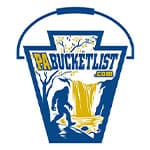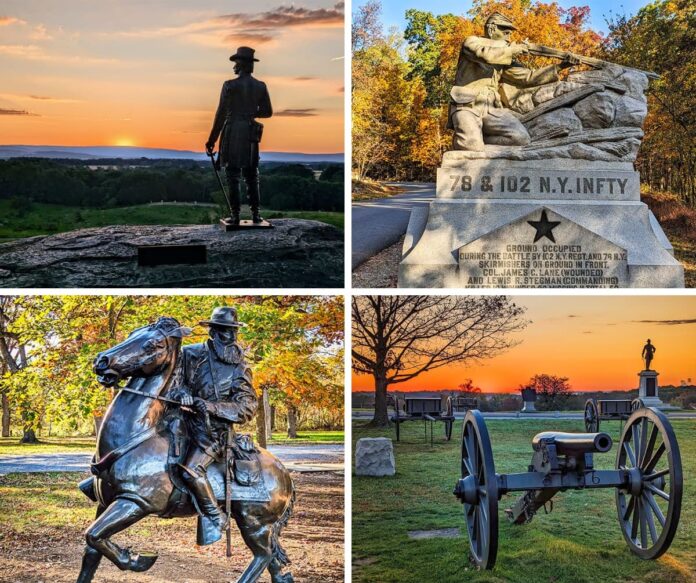
If you’re looking for information about touring the battlefield at the Gettysburg National Military Park, you’re in the right place!
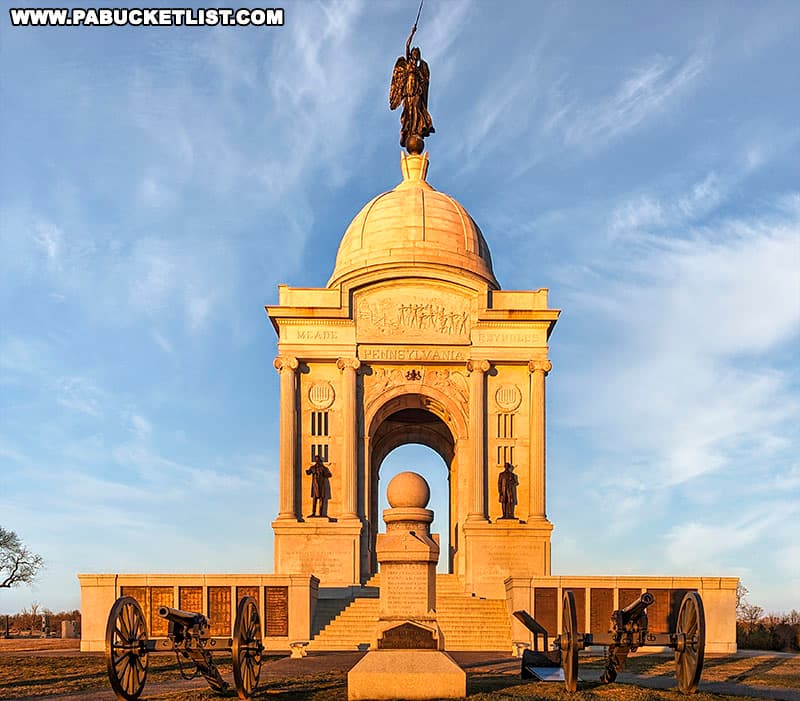
The Gettysburg National Military Park preserves a large portion of the ground on which the Battle of Gettysburg took place, one of the defining events in our nation’s history.
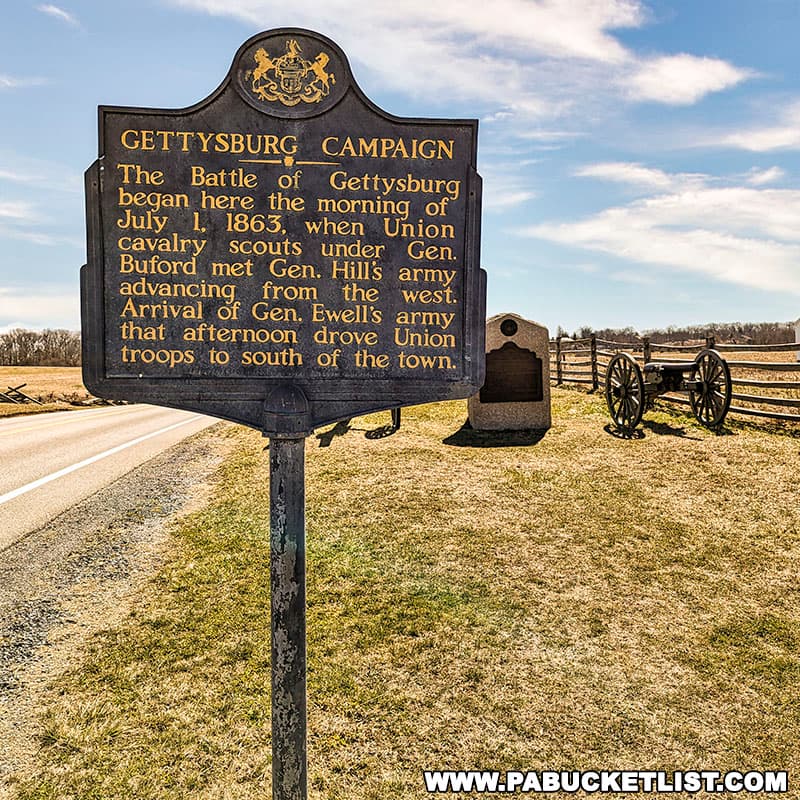
The battle, fought July 1-3, 1863, pitted the roughly 70,000-strong Confederate Army of Northern Virginia (commanded by General Robert E. Lee) against the roughly 94,000-strong Union Army of the Potomac (commanded by Major General George G. Meade).
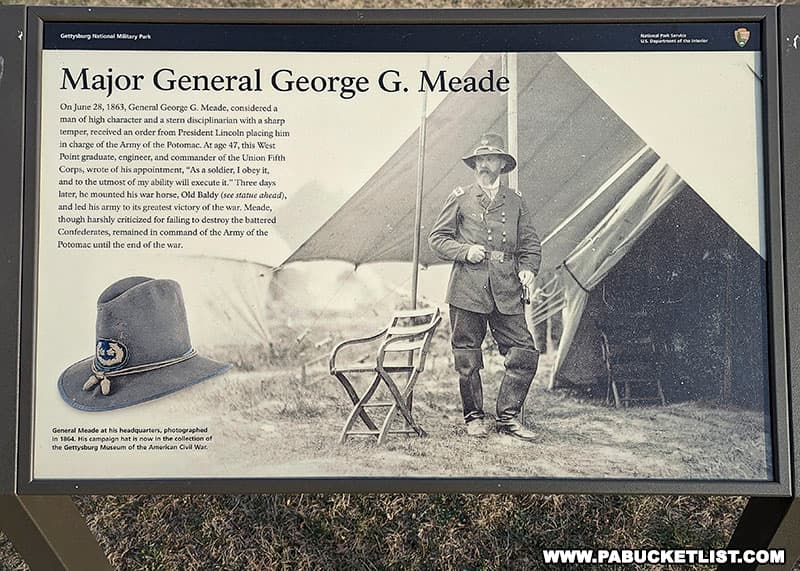
Gettysburg was the bloodiest battle of the Civil War, with combined losses between the two opposing armies of (roughly) 8,000 soldiers killed in action and another 40,000 wounded, captured, or missing in action.
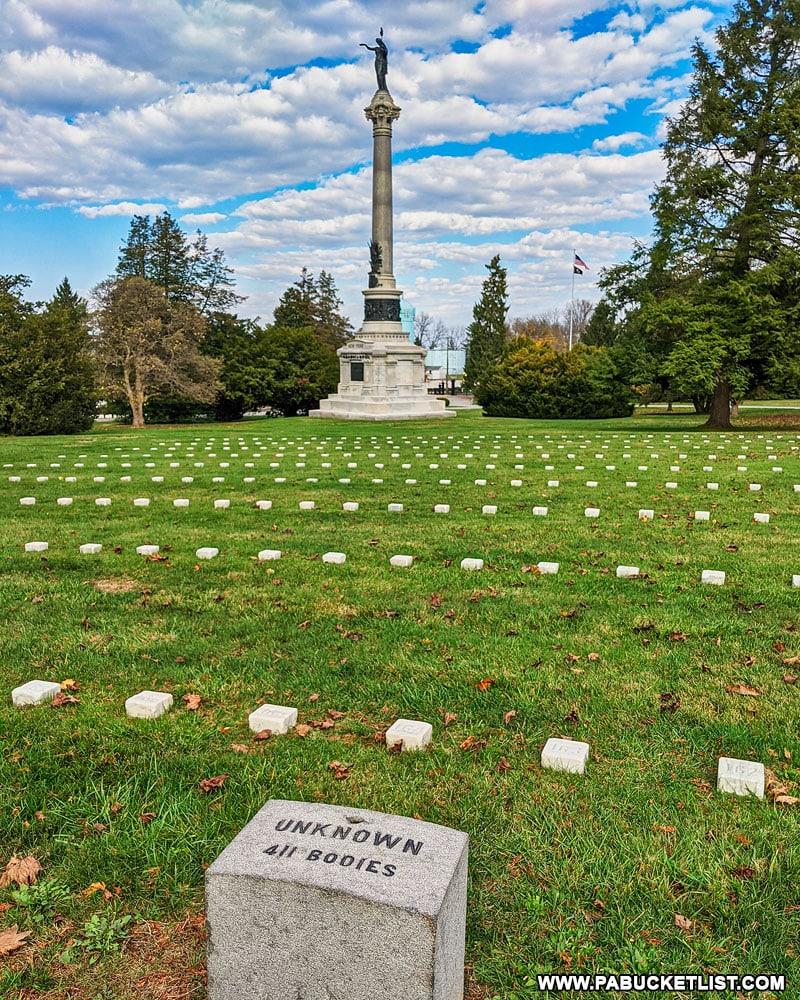
Although the Union victory here did not end the Civil War, it essentially forced General Lee and his Confederate army into a defensive war of attrition, eventually leading to his surrender in April, 1865.
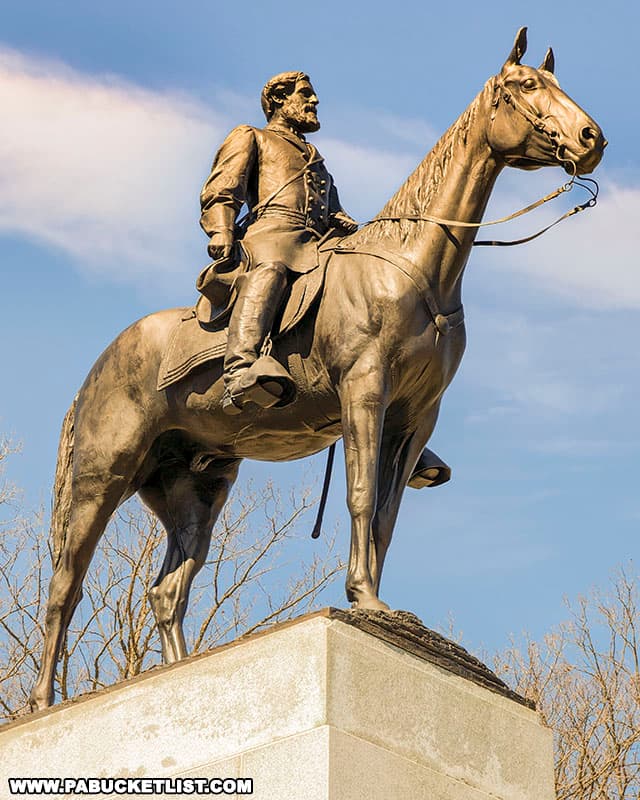
Recognizing the significance of the Battle of Gettysburg, private citizens began purchasing parts of the battlefield to preserve it as early as September 1863, just two months after the battle.
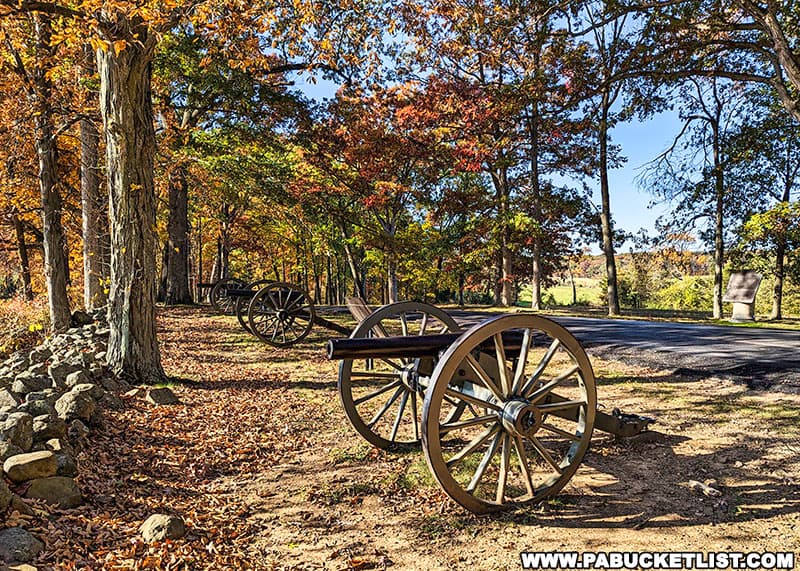
Eventually veterans groups and then the the Federal Government became involved, and through a combination of land purchases, land donations, and eminent domain, the Gettysburg National Military Park was born.
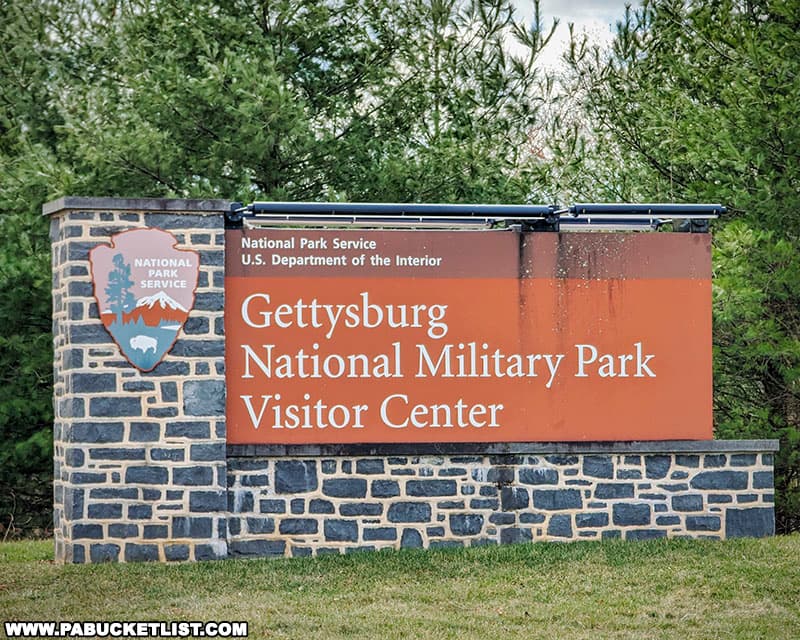
Today the park encompasses nearly 6,000 acres, including large portions of the original battlefield and the Soldiers’ National Cemetery as well.
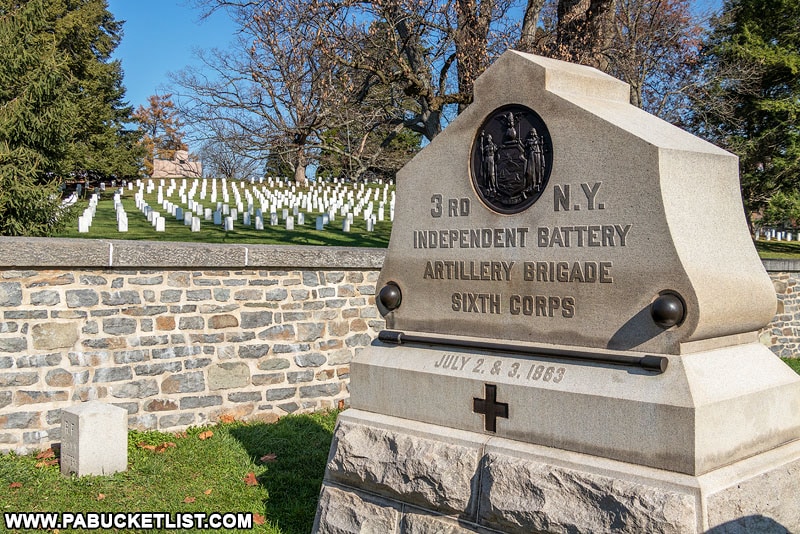
At a ceremony dedicating this cemetery created for the more than 3,500 Union soldiers killed in action there, President Lincoln gave what would become known as the Gettysburg Address, one of the most famous speeches in American history.
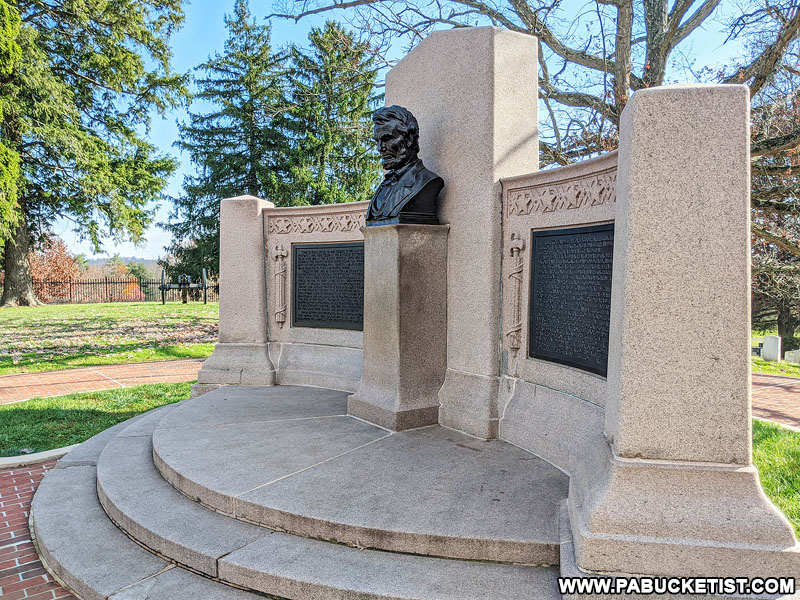
Touring the Gettysburg Battlefield
My advice to first-time visitors to the Gettysburg battlefield is to explore the Visitor Center at the Gettysburg National Military Park before you do anything else.
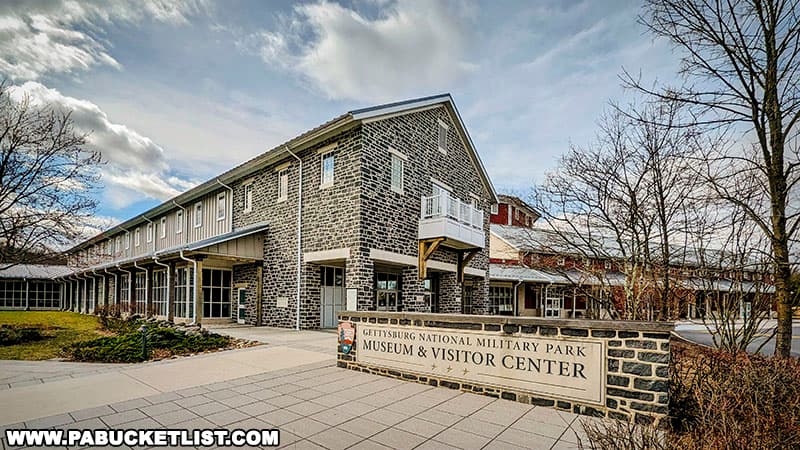
Through a combination of short films, interpretive exhibits, and relics, the museum and visitor center will help you better understand the cast of characters, the critical events, and the geographic features of the Gettysburg battlefield that helped shape the 3-day battle’s outcome.
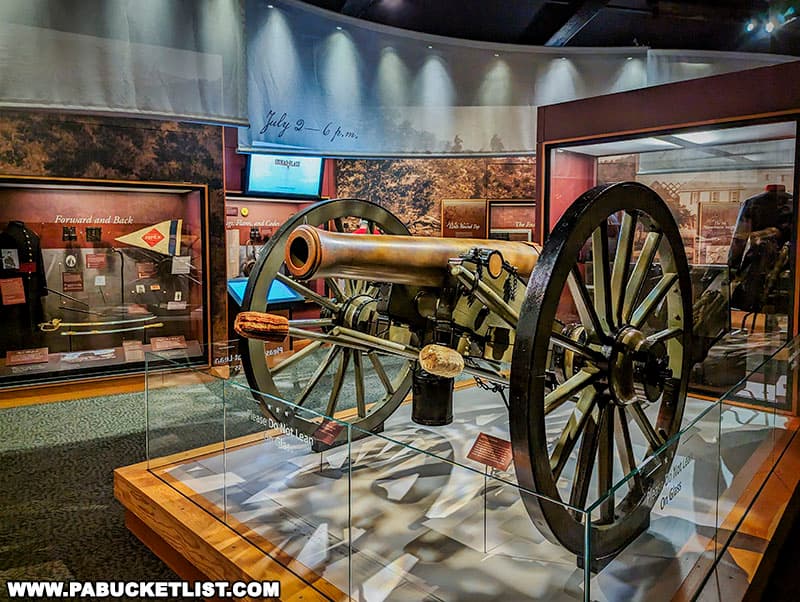
That way, when you step onto the battlefield, you’ll have a general idea of what you’re looking at, as opposed to trying to blindly decipher the importance of the roughly 1,400 monuments, tablets, plaques, and markers on the grounds!
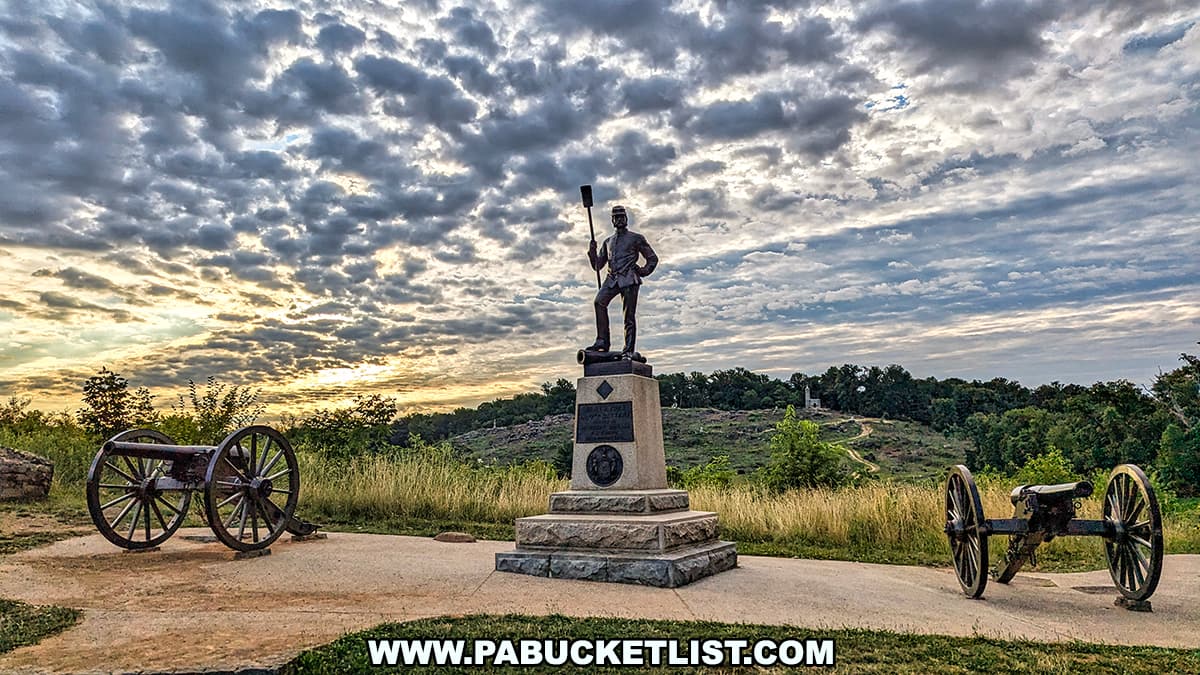
How to Tour the Battlefield
There are a myriad of ways to tour the Gettysburg battlefield, each with pros and cons as far as expense, flexibility, and personal attention.
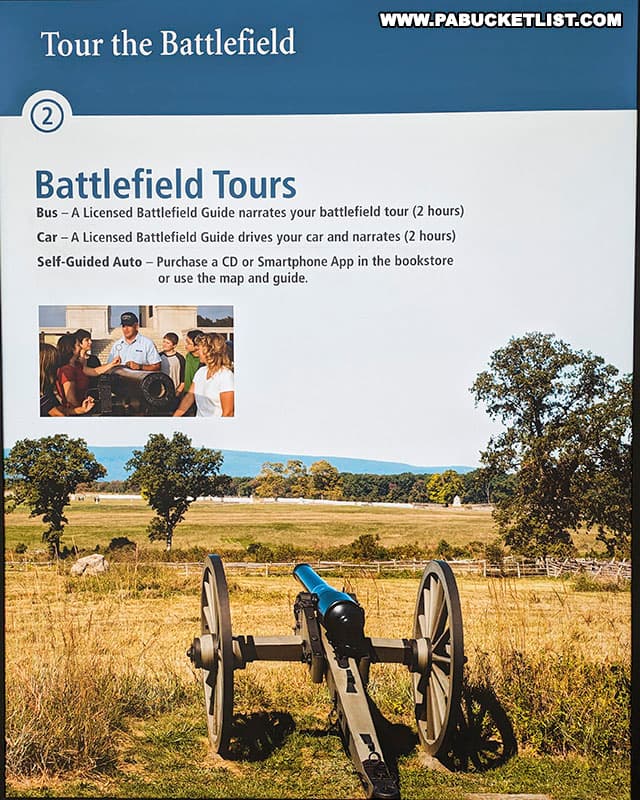
If you want to tour it on the cheap and at your own pace, you can simply pick up a free self-guided driving tour map at the visitor center and strike out on you own – there is NO FEE to drive around the Gettysburg battlefield.
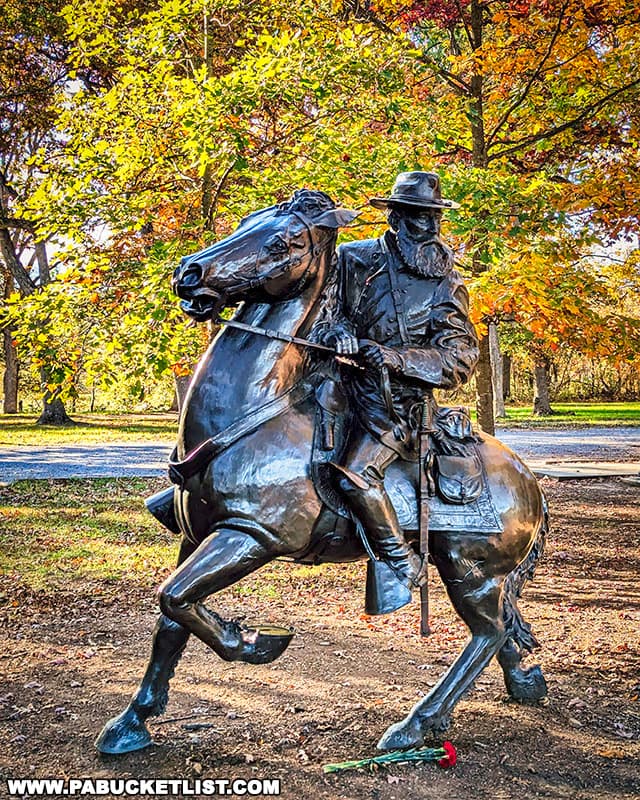
If you’d rather have someone else do the driving while an expert narrates, you can book passage on a guided bus tour.
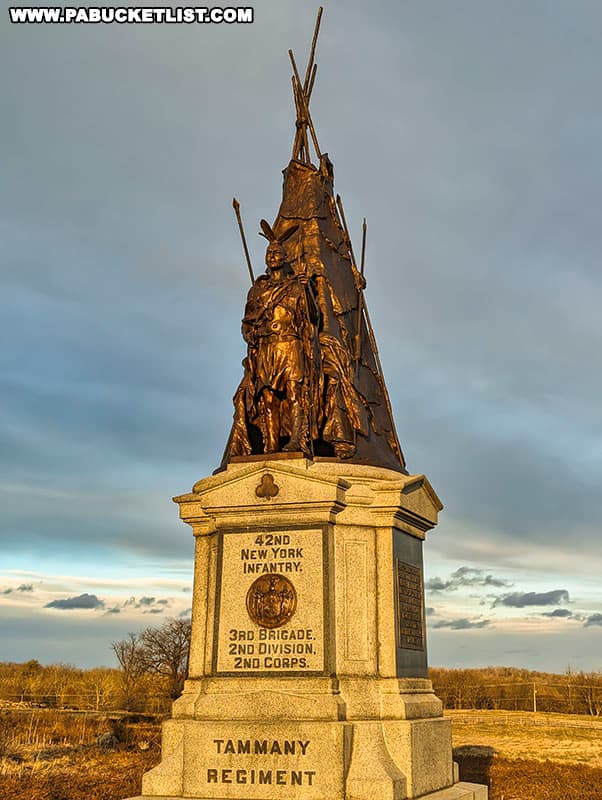
If you want the ultimate combination of expertise and personalized attention, you can hire a Licensed Battlefield Guide to take you on a private tour, where you can tweak the tour to your own specific interests (that’s what I did on my most recent visit).
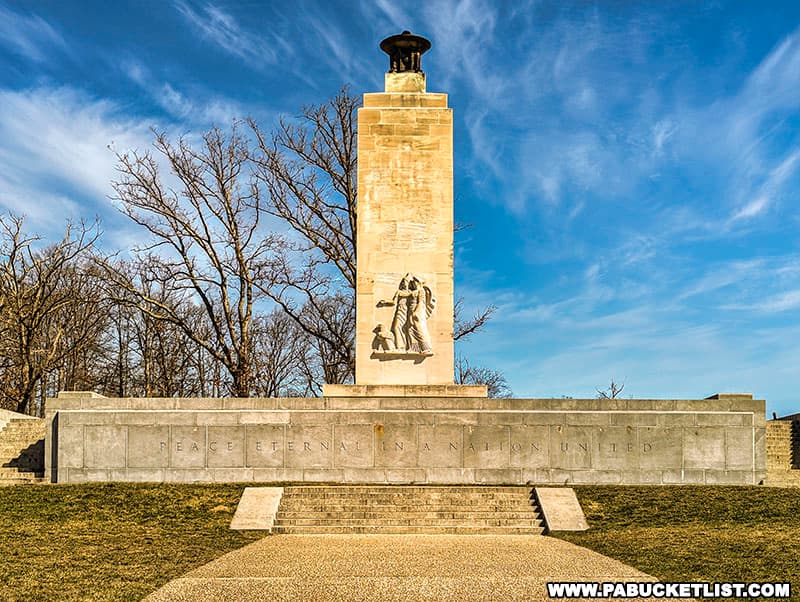
When deciding how you want to tour it, keep in mind that the Gettysburg National Military Park covers 6,000 acres and has more than 40 miles of roads (many one-way) running through it.
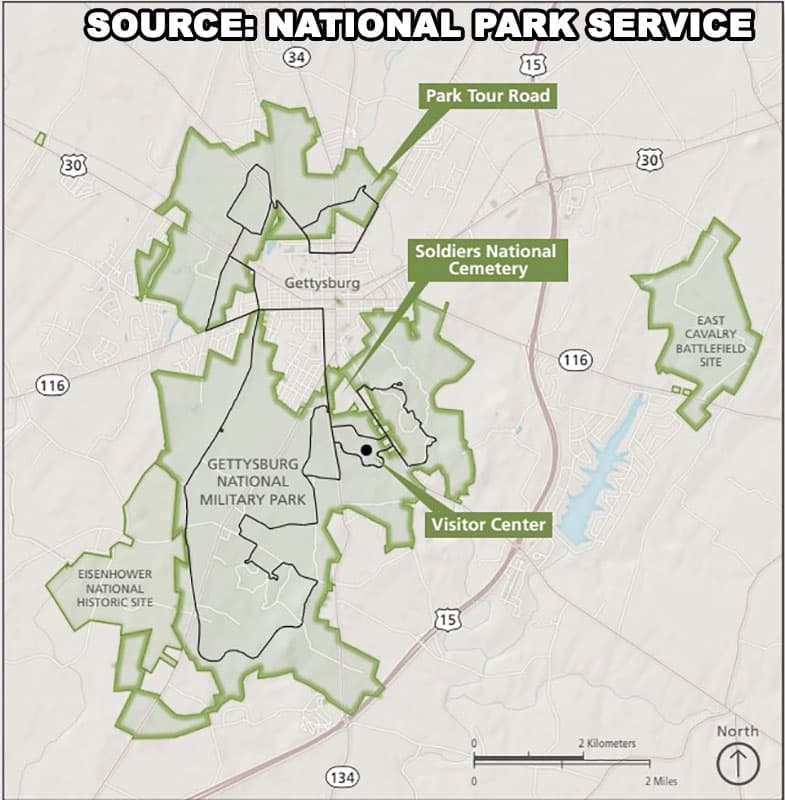
So if you really want to get the most out of your visit, my advice is to take some form of guided tour first, and then go back and revisit anything you wanted to examine more closely on your own, once you have a better grasp of the layout of the park.
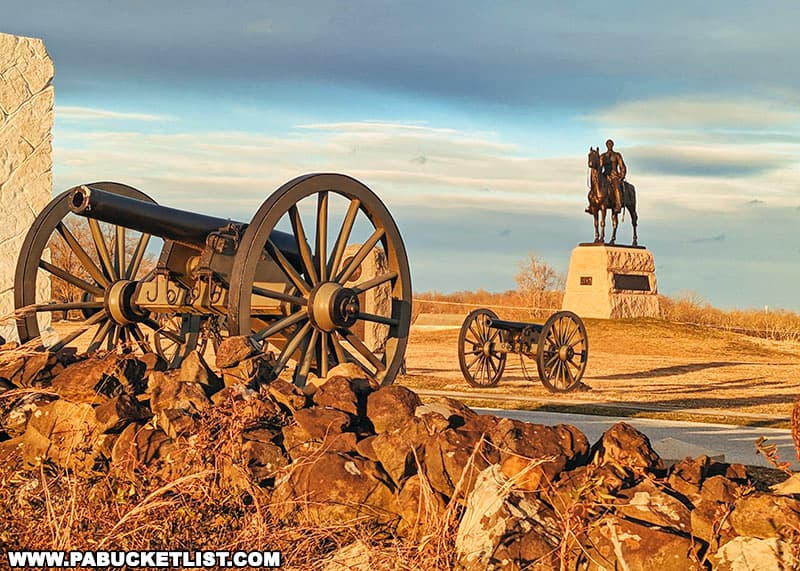
Highlights of the Gettysburg Battlefield Tour
Every single person that tours the expansive Gettysburg battlefield will take something different away from the experience, but here are 10 of the locations, monuments, and experiences I find to be the most powerful when visiting.
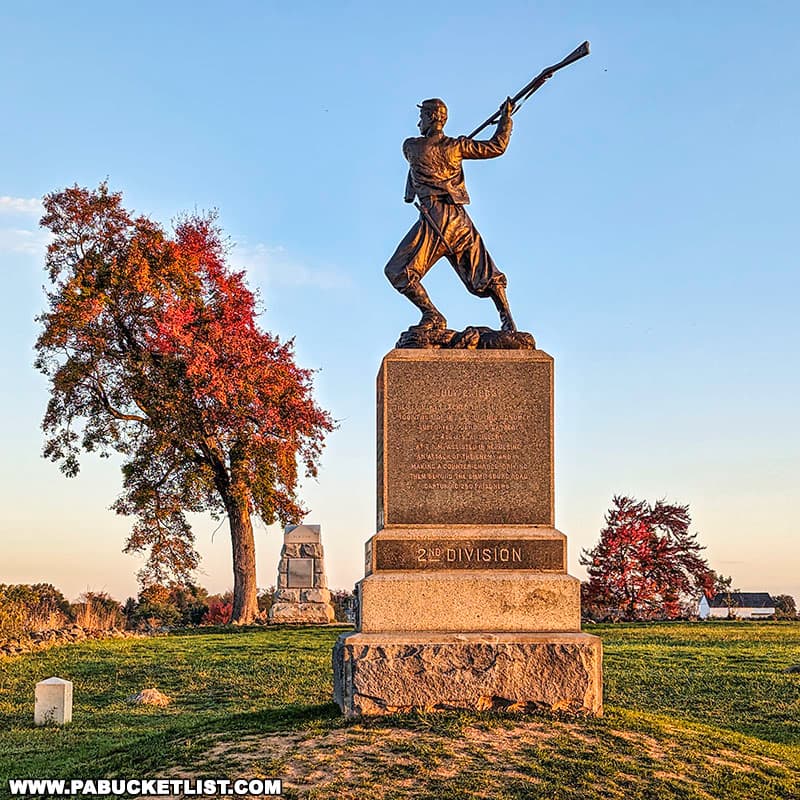
1. Sunrise over the Gettysburg Battlefield
For a place that witnessed so much death and destruction, the tranquility of watching the sunrise over the battlefield is worth waking up early for.
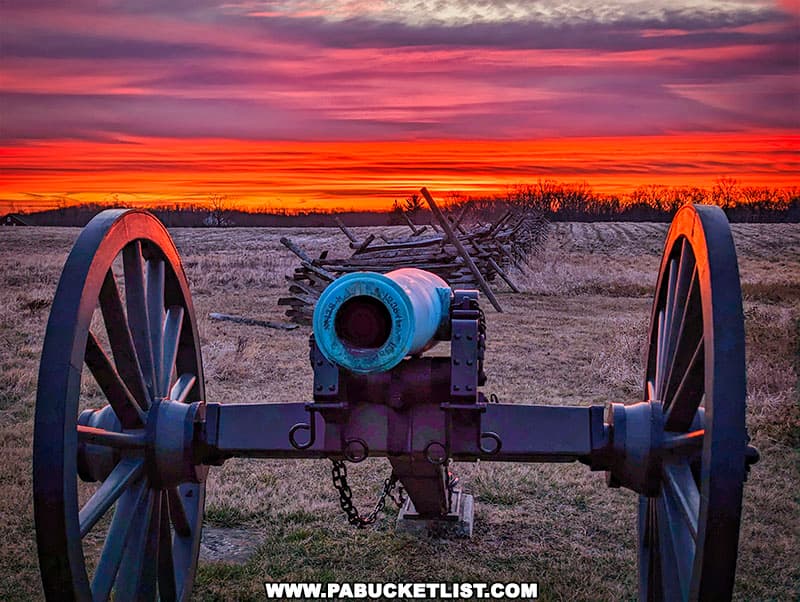
Visitors are permitted on the battlefield from a half-hour before sunrise until a half-hour after sunset.
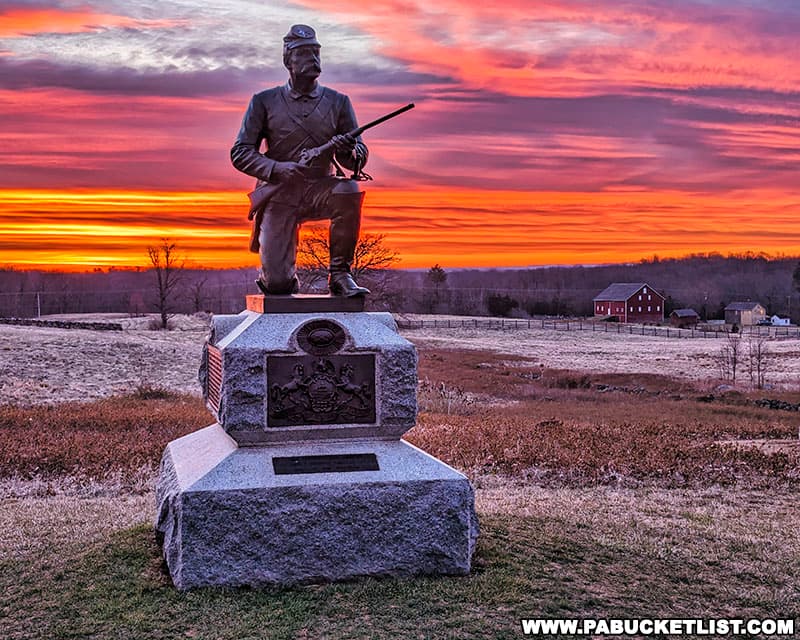
Cemetery Ridge is a spectacular spot to watch the sunrise over the battlefield.
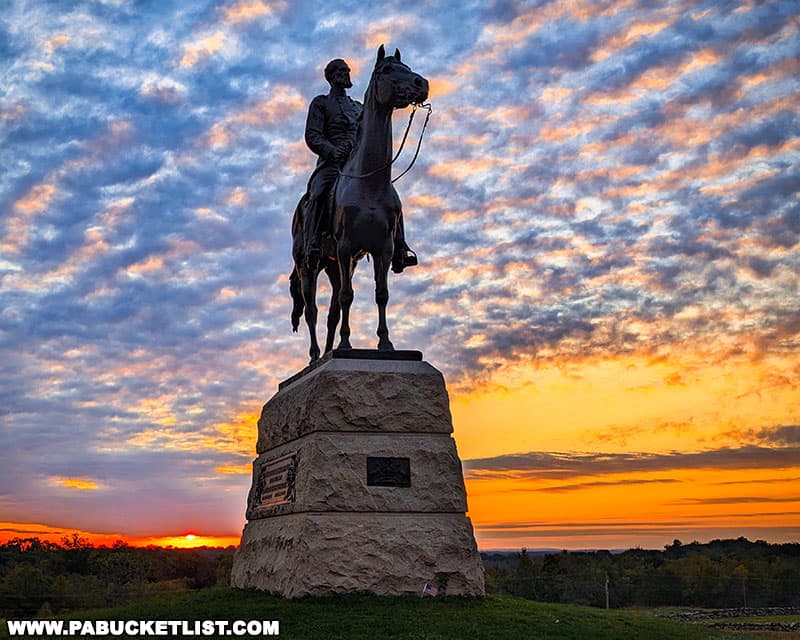
East Cemetery Hill is another good sunrise location.
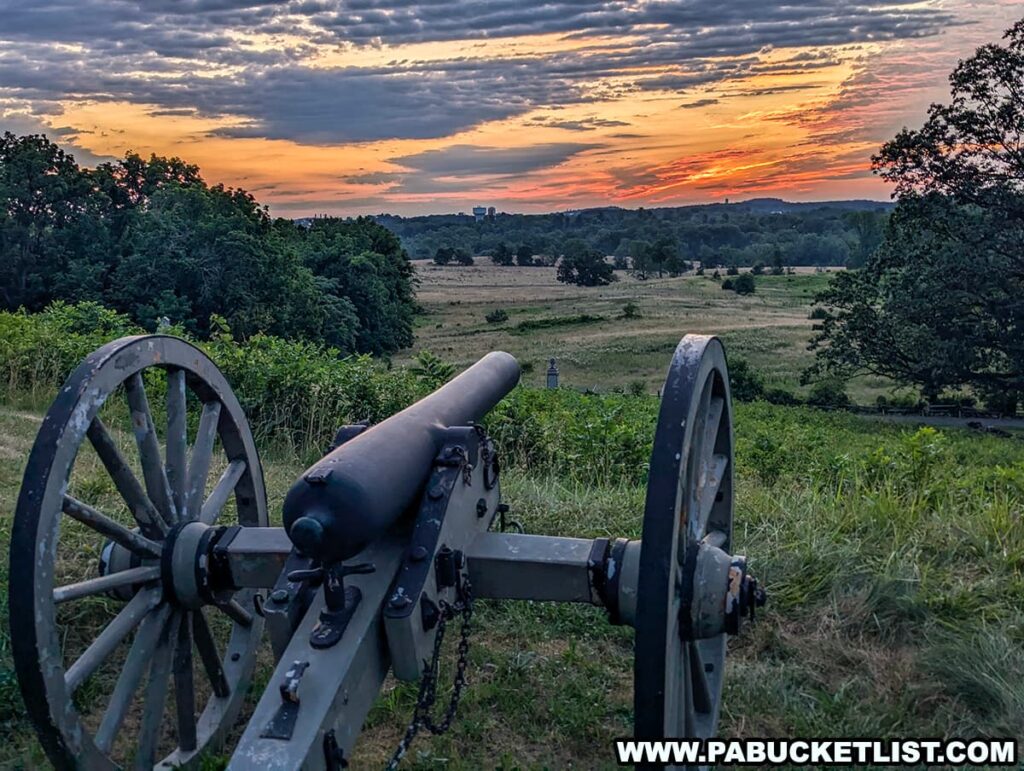
Little Round Top is also a terrific spot for catching dramatic skies at first light.

2. Little Round Top
Reopened in 2024 after being closed a few years for repairs/renovations, Little Round Top is one of the most famous spots on the Gettysburg Battlefield.
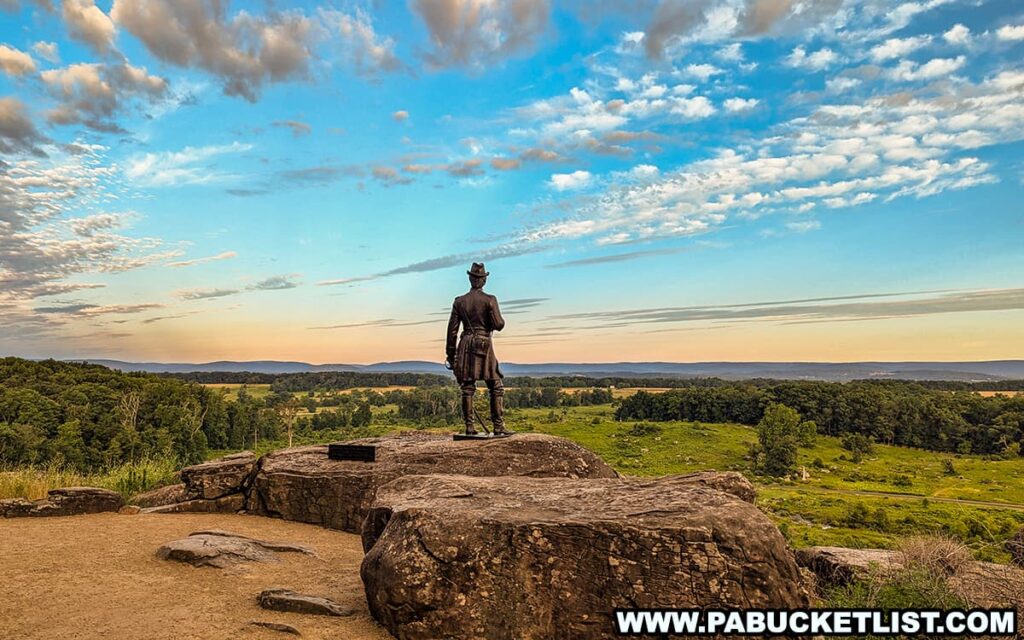
On July 2, 1863, during the second day of the Battle of Gettysburg, Confederate forces launched an unsuccessful attack on the Union’s left flank at this location.
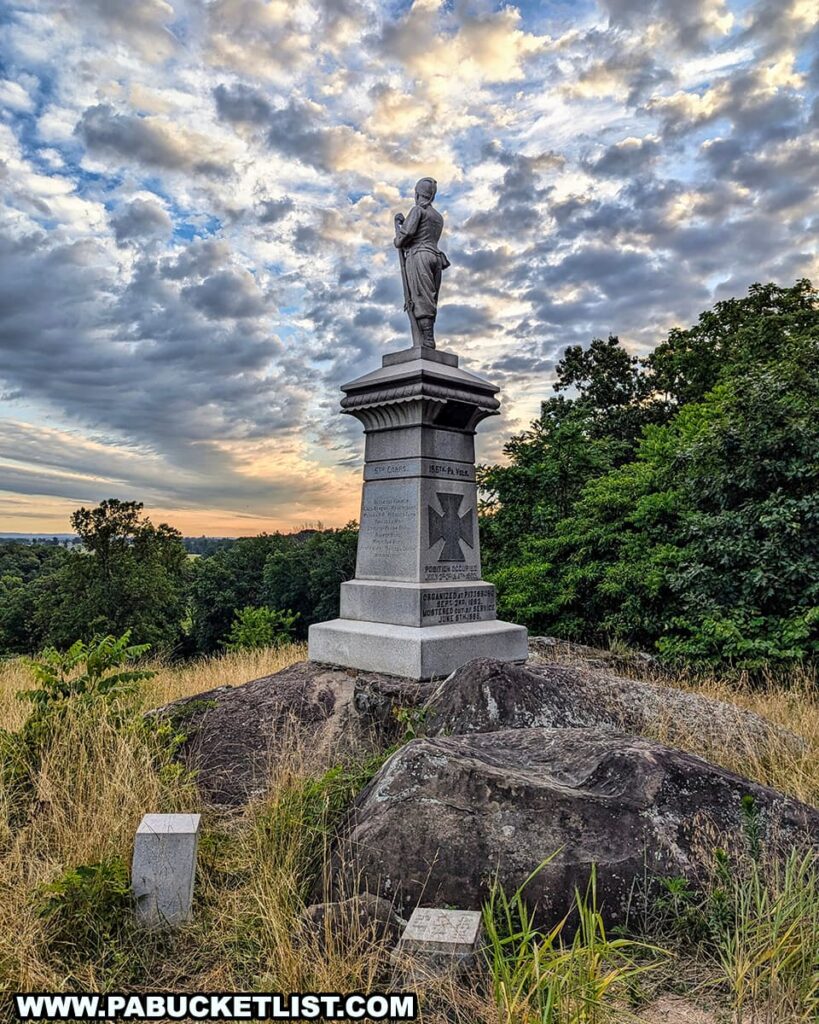
Troops from Michigan, New York, Pennsylvania, and Maine defended the Union position here.
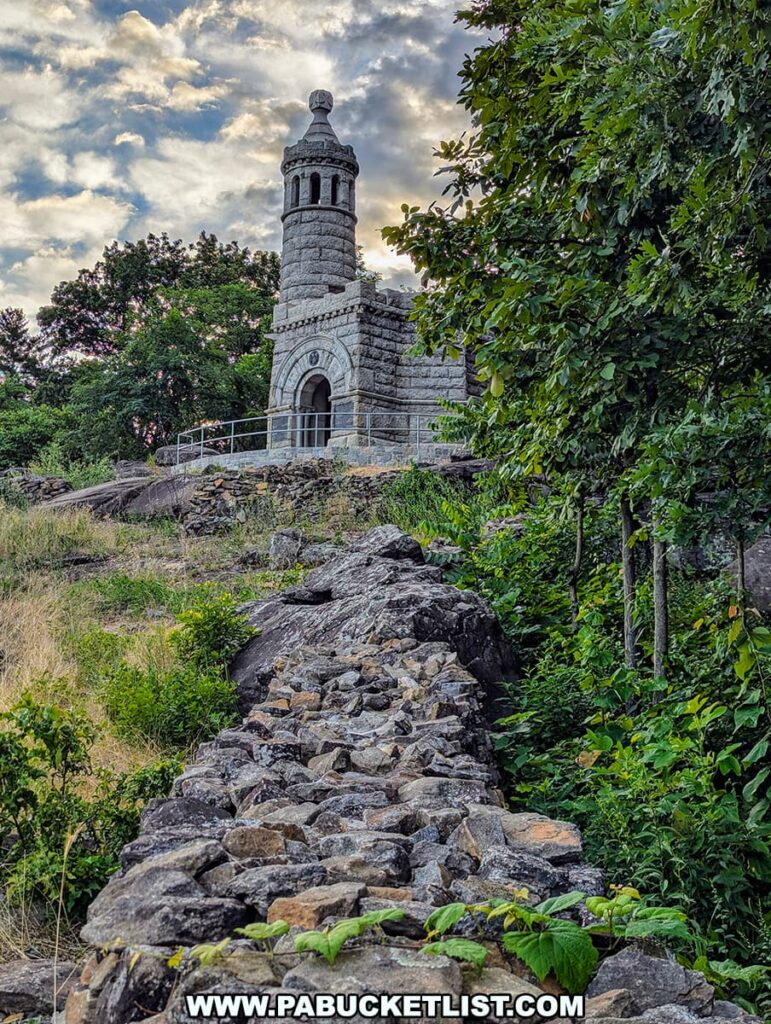
The 20th Maine Volunteer Infantry Regiment, led by Colonel Joshua Lawrence Chamberlain, became renowned for their heroic actions at this site, which included a dramatic downhill bayonet charge.
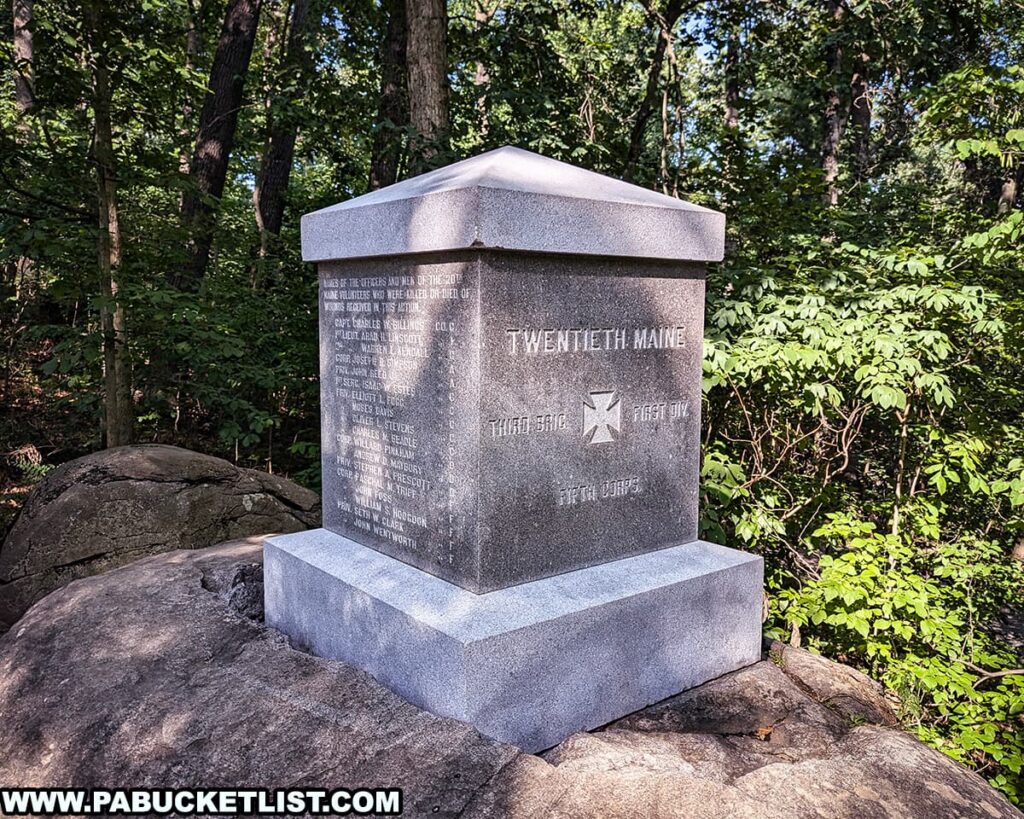
Little Round Top is also one of the finest spots to take in a spectacular sunset on the battlefield.
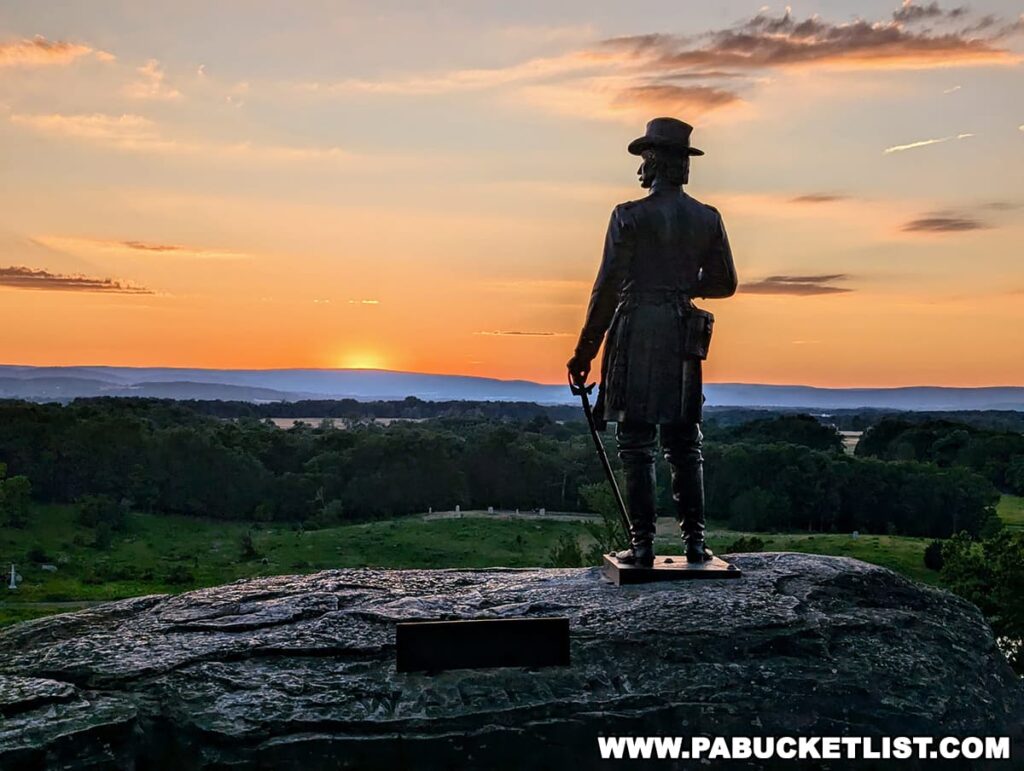
3. The John Burns Monument
John Burns was a Gettysburg local in his seventies who joined in the fight against the Confederates on the first day of the battle, survived despite being wounded 3 times, and became a folk hero after the battle.
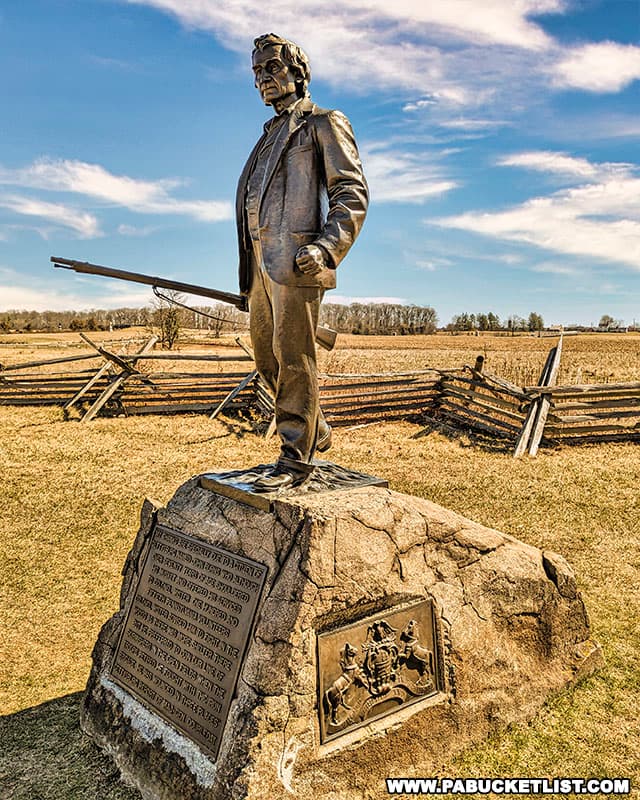
4. Sallie the Dog
Sallie was an American Pitbull and canine mascot of the 11th Pennsylvania Infantry, accompanying the soldiers into battle where she would bark furiously at the enemy.
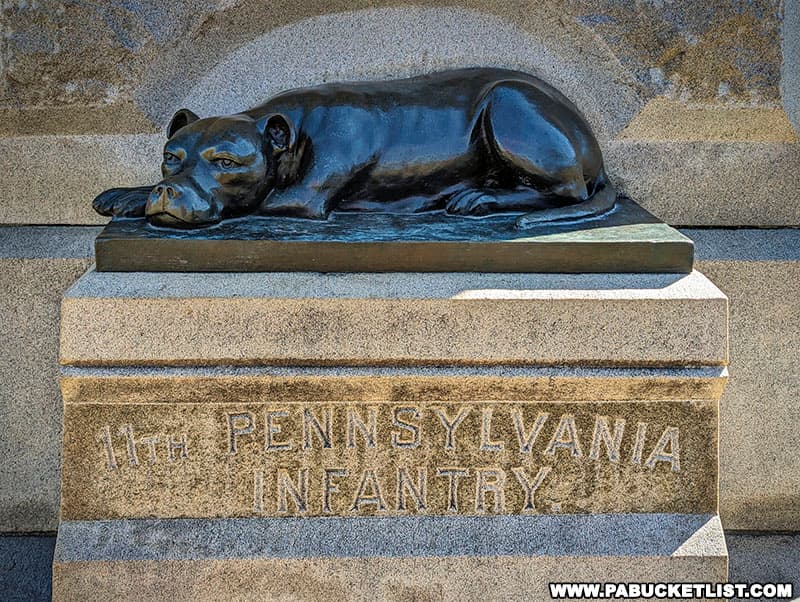
Sallie was separated from her regiment during the chaos of the Battle of Gettysburg, but survived and was reunited with the survivors of the the 11th Pennsylvania Infantry after the Confederates retreated; today she stands eternal watch at the foot of the regimental monument on the battlefield.
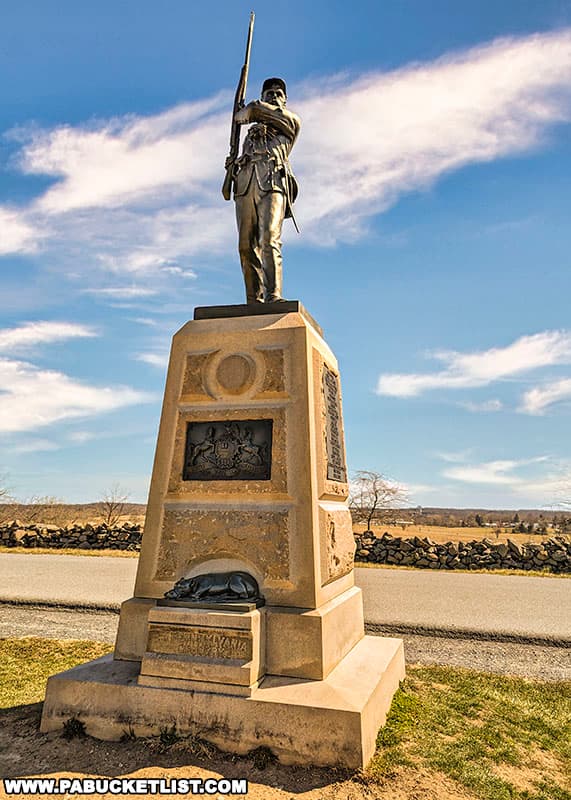
5. The Devil’s Den
There is perhaps no Pennsylvania rock formation more famous than the Devil’s Den.
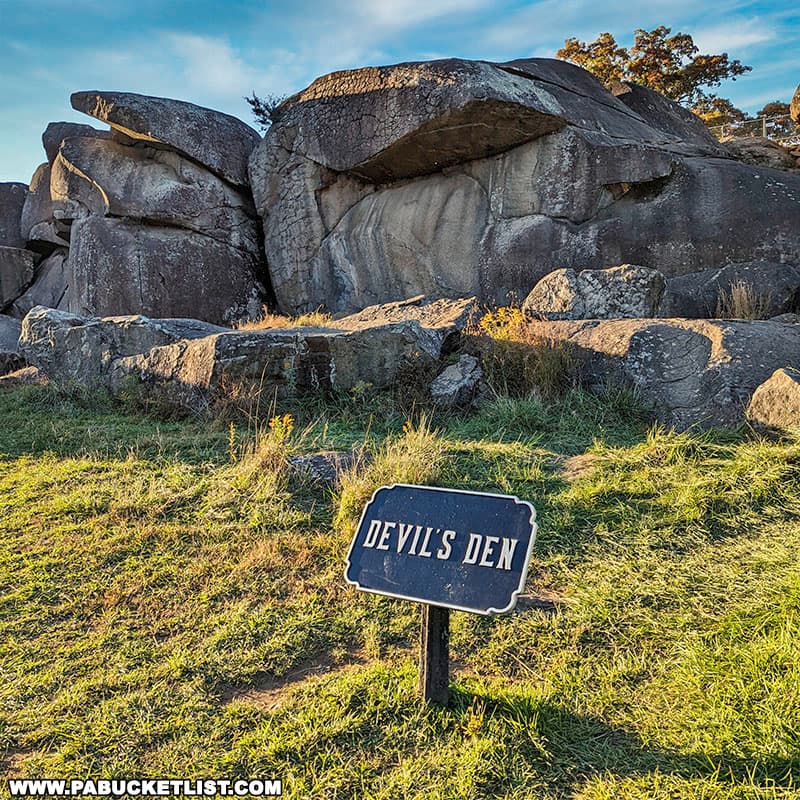
This jumbled mass of large volcanic boulders at the foot of Little Round Top became the scene of intense and bloody infantry fighting on the second day of the battle.
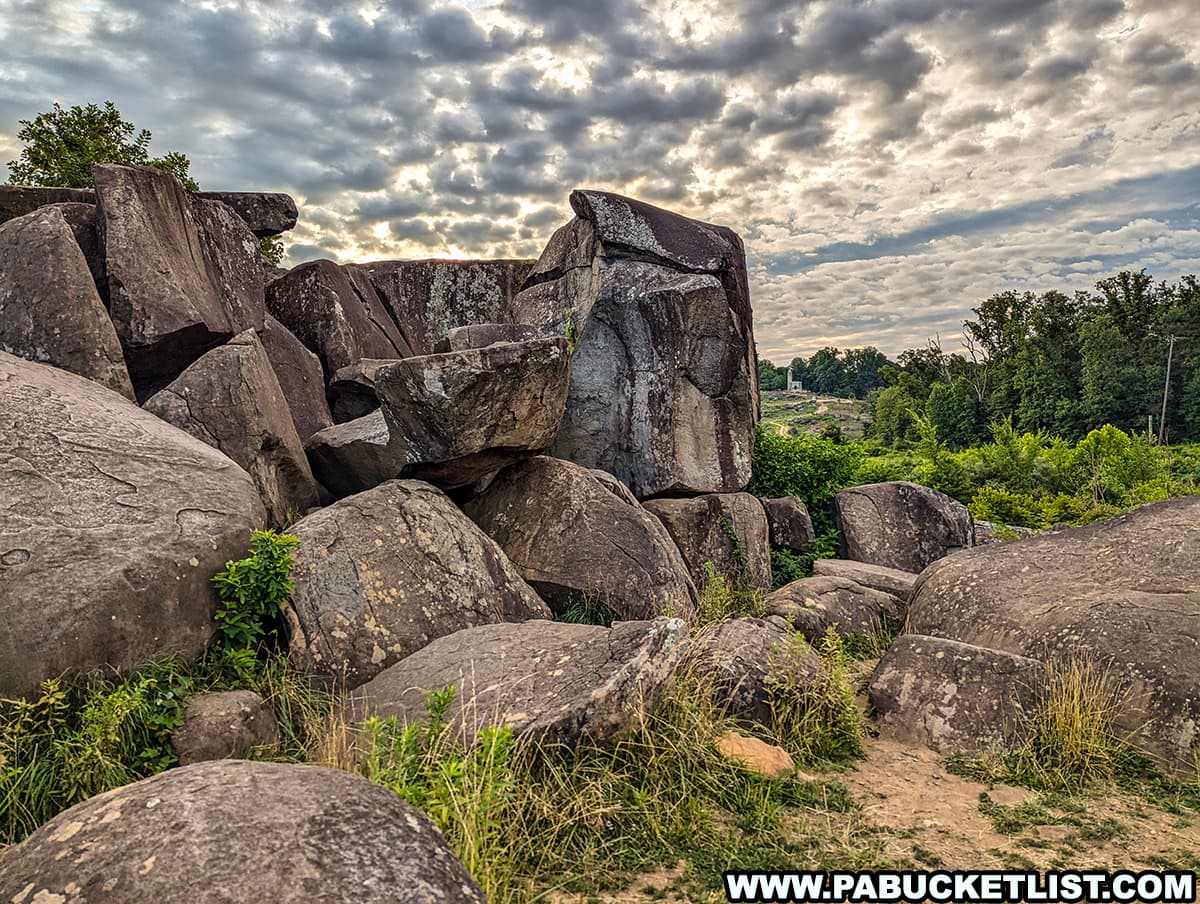
One of the most famous photos of the aftermath of the Battle of Gettysburg was taken at the Devil’s Den.
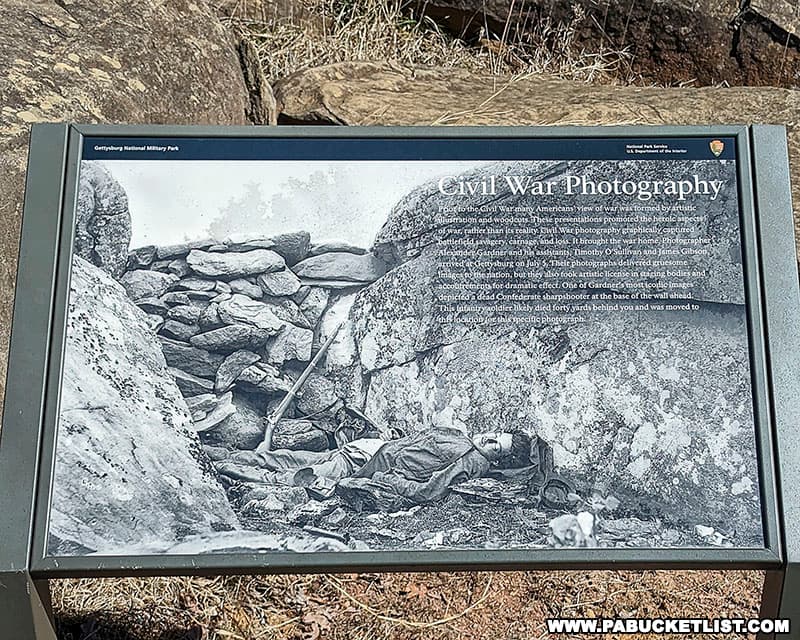
Today the scene at that exact spot is eerily similar.
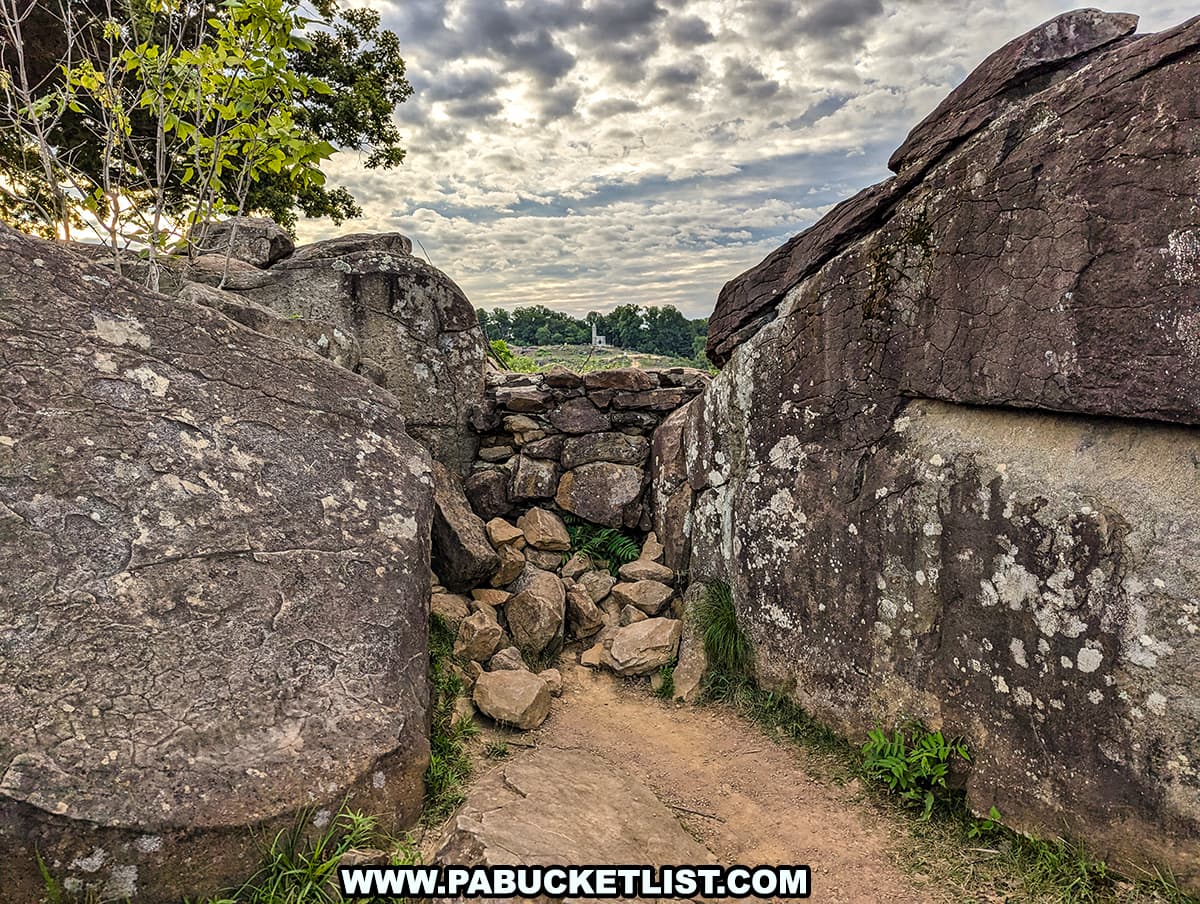
6. The Opening Gun of the Battle of Gettysburg
Although it may be just 1 of the 400-plus cannons on display at the Gettysburg National Military Park, this particular cannon, manufactured in Phoenixville PA, fired the first Union artillery shot of the battle.
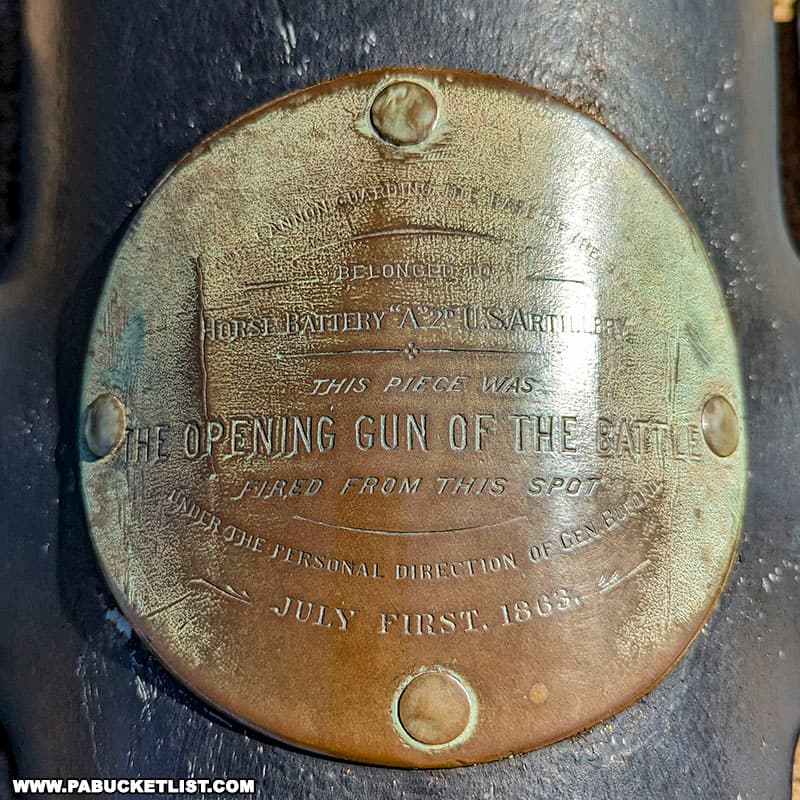
You’ll find it at the base of the monument dedicated to Union Brigadier General John Buford along U.S. 30, just west of Gettysburg.
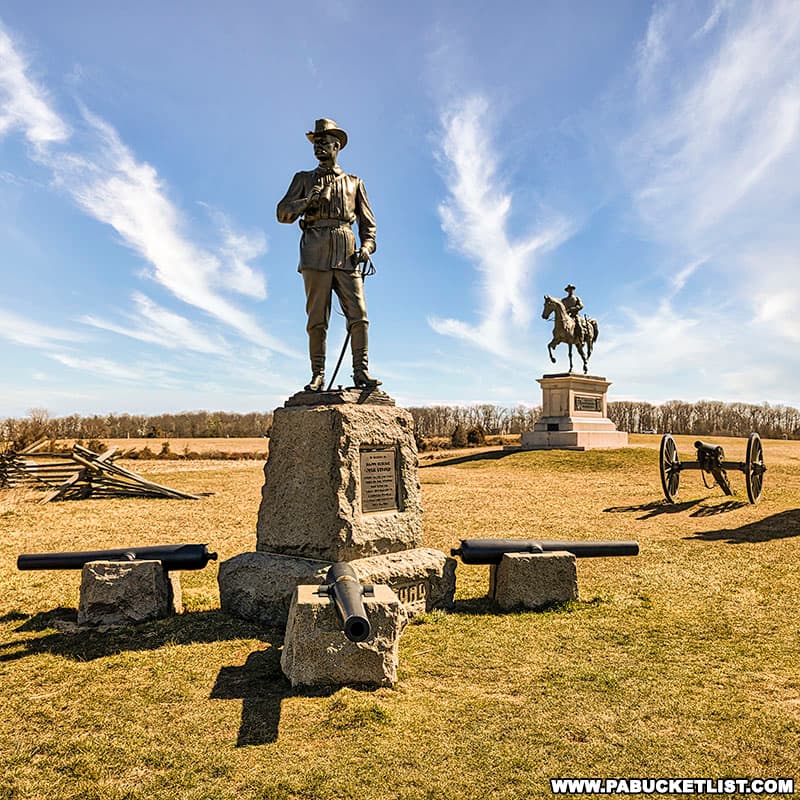
7. Rickett’s Battery Monument
Although today his name is synonymous with Pennsylvania’s most famous waterfall hike and the state park named for him, Captain Robert B. Ricketts served with distinction as an artillery officer at Gettysburg, and was promoted to Colonel by the end of the war.
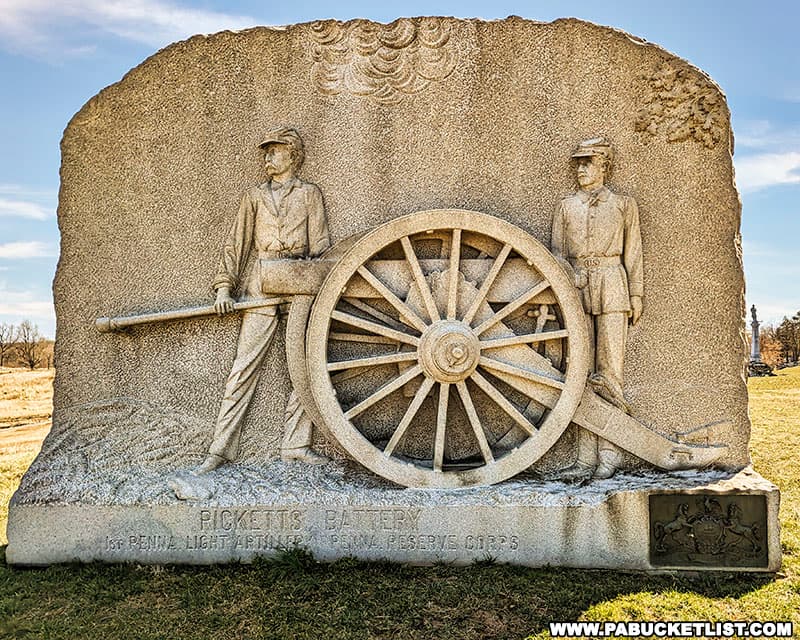
Located on East Cemetery Hill, this is a picturesque spot to catch the sunrise as well.
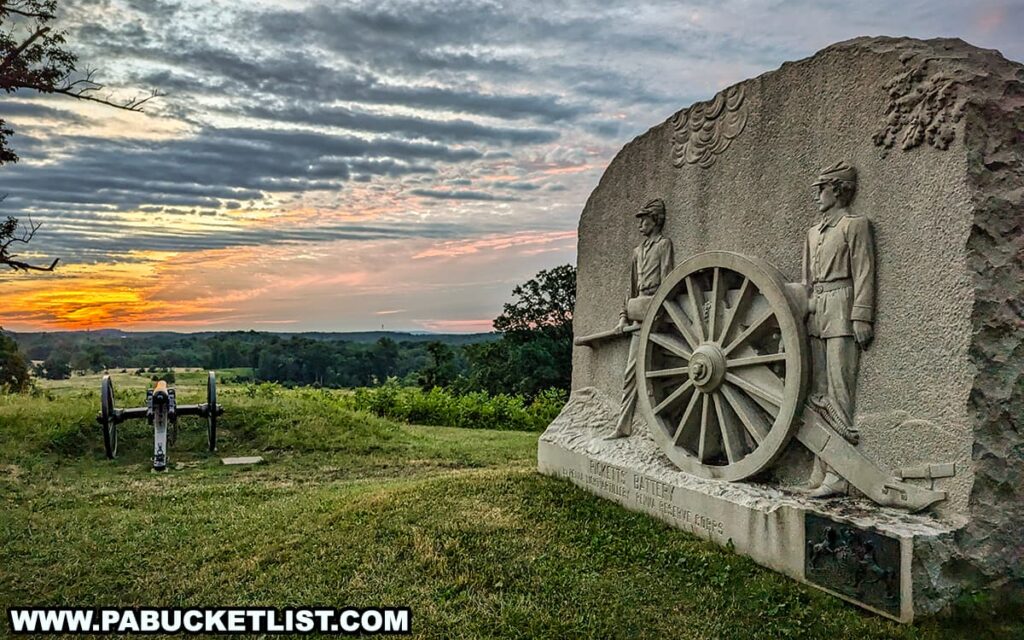
8. The High Water Mark of the Rebellion Monument
This bronze book flanked by cannons marks the spot where the famed Confederate assault known as “Pickett’s Charge” came to a disastrous end in the face of Union artillery and infantry fire on the final day of the Battle of Gettysburg; this is considered by many historians to be the turning point in the Civil War.
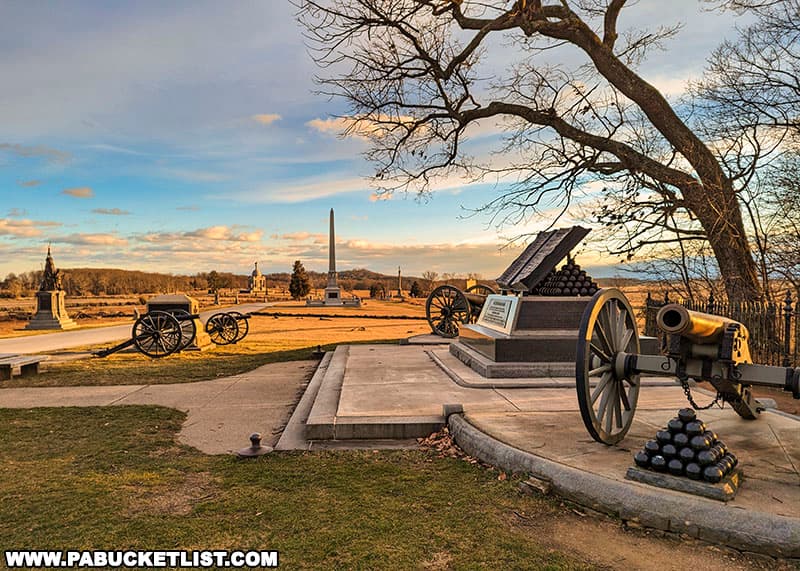
The Copse of Trees behind the monument was used as the target landmark for Pickett’s Charge.
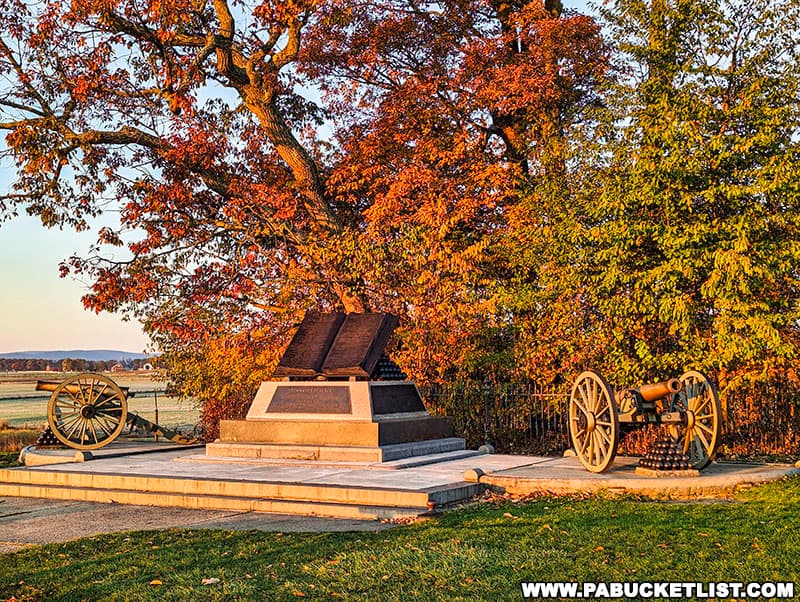
9. The Pennsylvania Monument
The Pennsylvania Monument is the largest monument on the Gettysburg battlefield, reaching a height of 110 feet at the tip of Winged Victory’s sword.
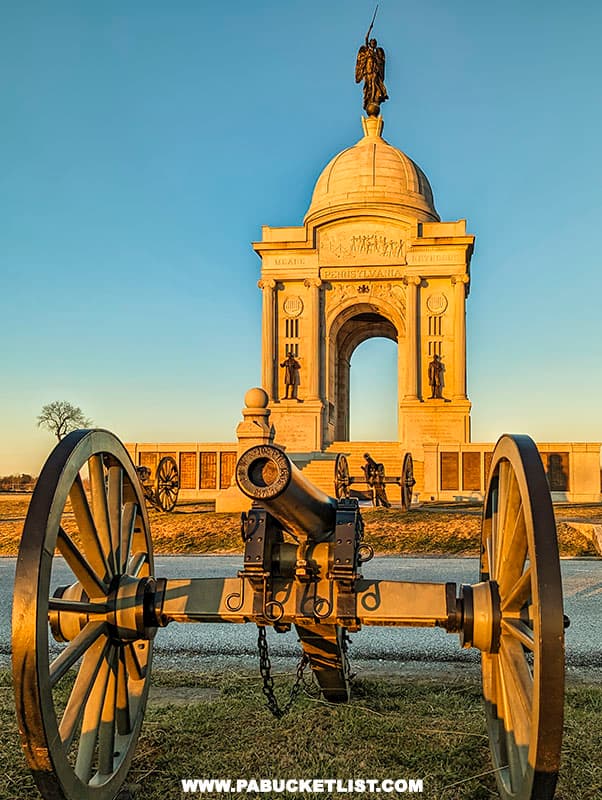
A spiral staircase takes visitors up into the base of the dome, which offers a panoramic view of the battlefield.
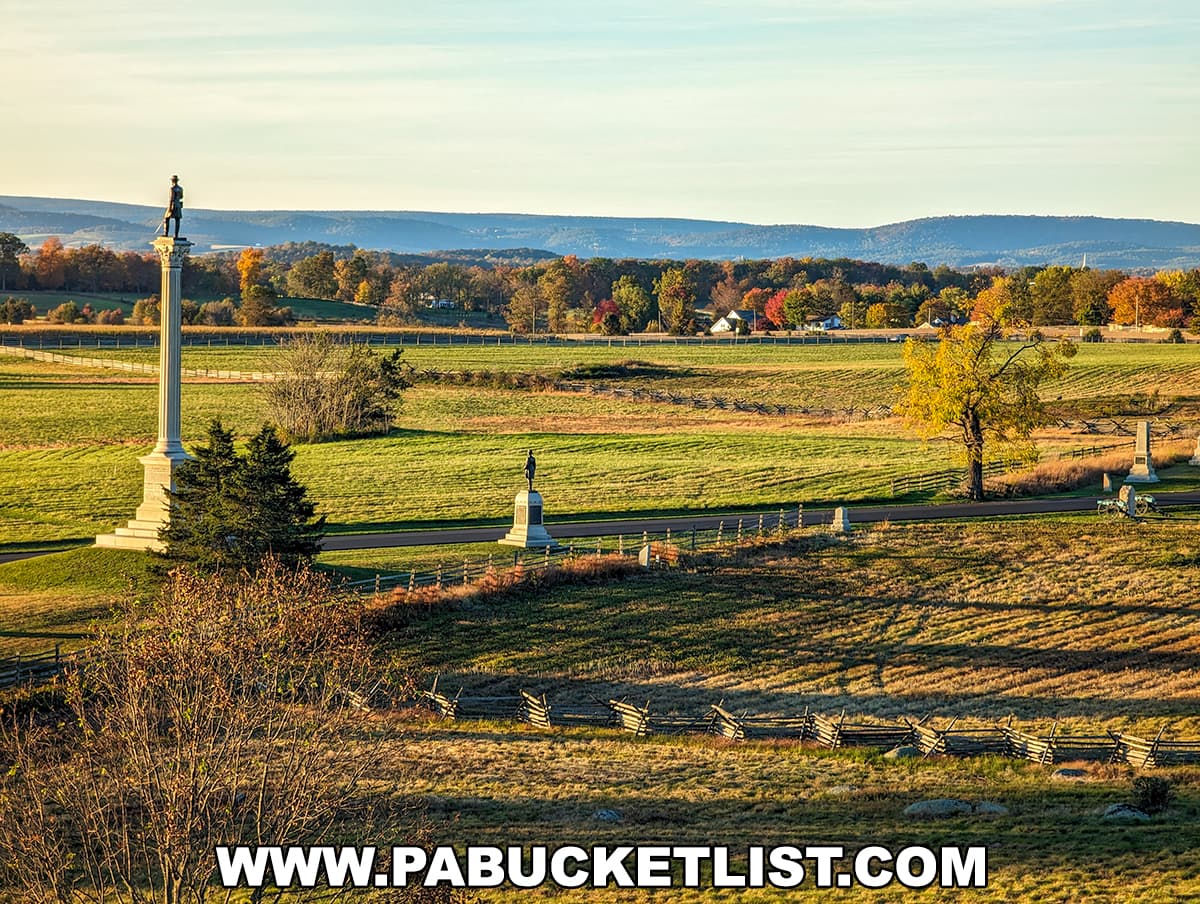
10. The Maryland Monument
Perhaps no monument on the battlefield better illustrates the “brother against brother” undercurrent of the Civil War more poignantly than this one, which depicts two wounded Marylanders, one Union and one Confederate, helping each other on the battlefield.
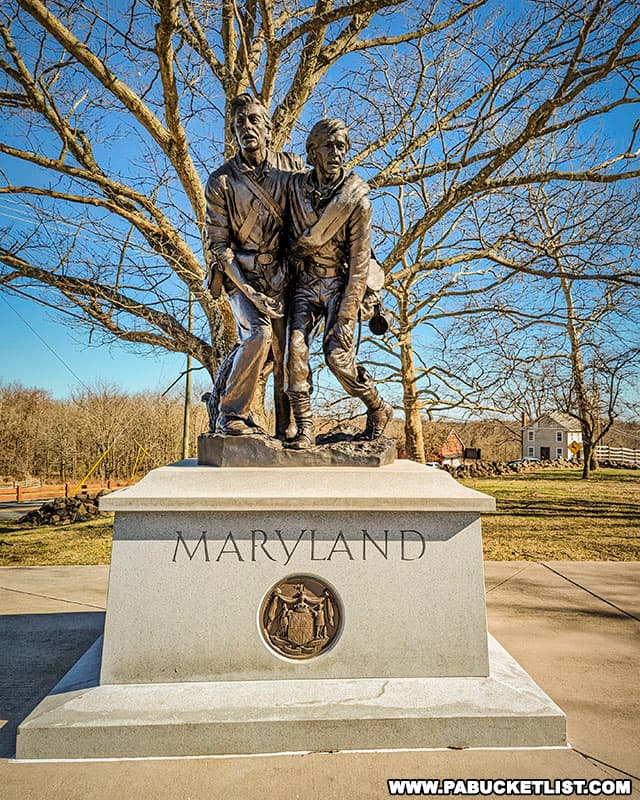
More than 3,000 Marylanders served on both sides of the conflict at the Battle of Gettysburg.
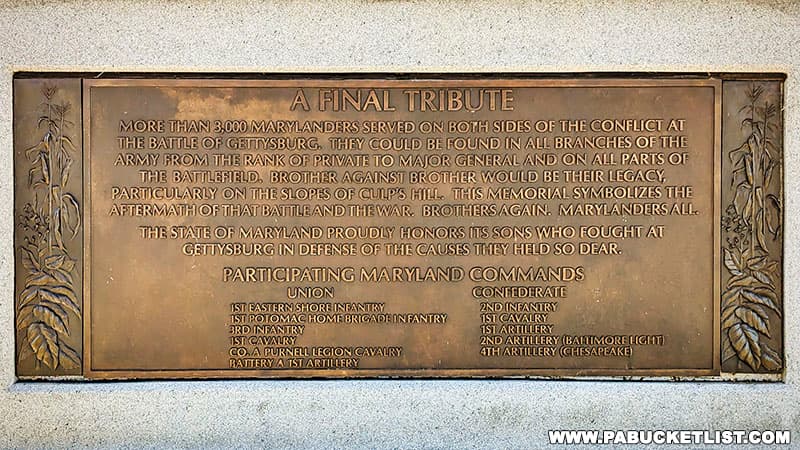
Why Tour the Gettysburg Battlefield
A question some will ask is “why would anyone want to tour a place where so much death and misery occurred?”
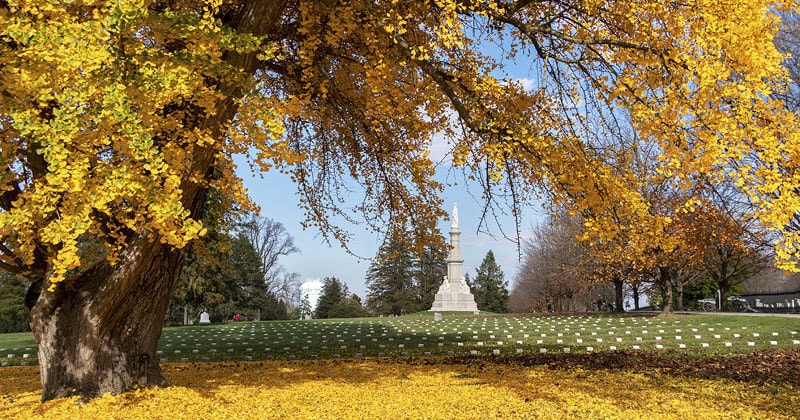
And my answer is that while it’s true the Battle of Gettysburg was one of one of the darkest three-day periods in America’s history, the Gettysburg National Military Park itself serves as a symbol of remembrance, reunion, and renewal.
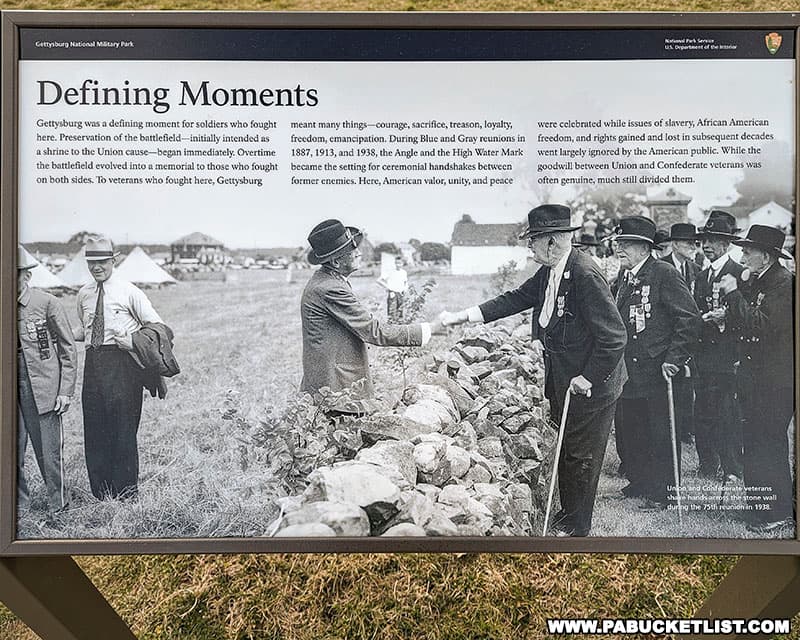
The park does not glorify the Civil War; it humanizes the costs of the Civil War on this its bloodiest battlefield.
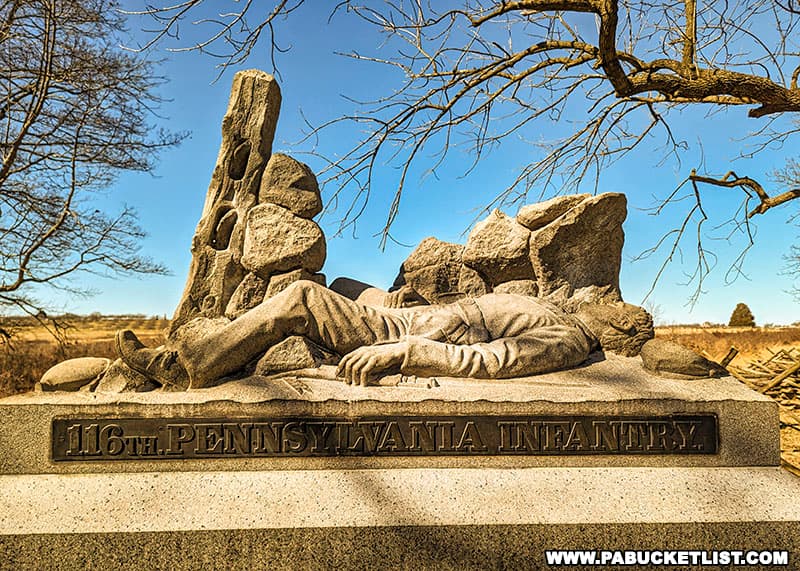
The park is also a testament to the healing of the battlefield itself.
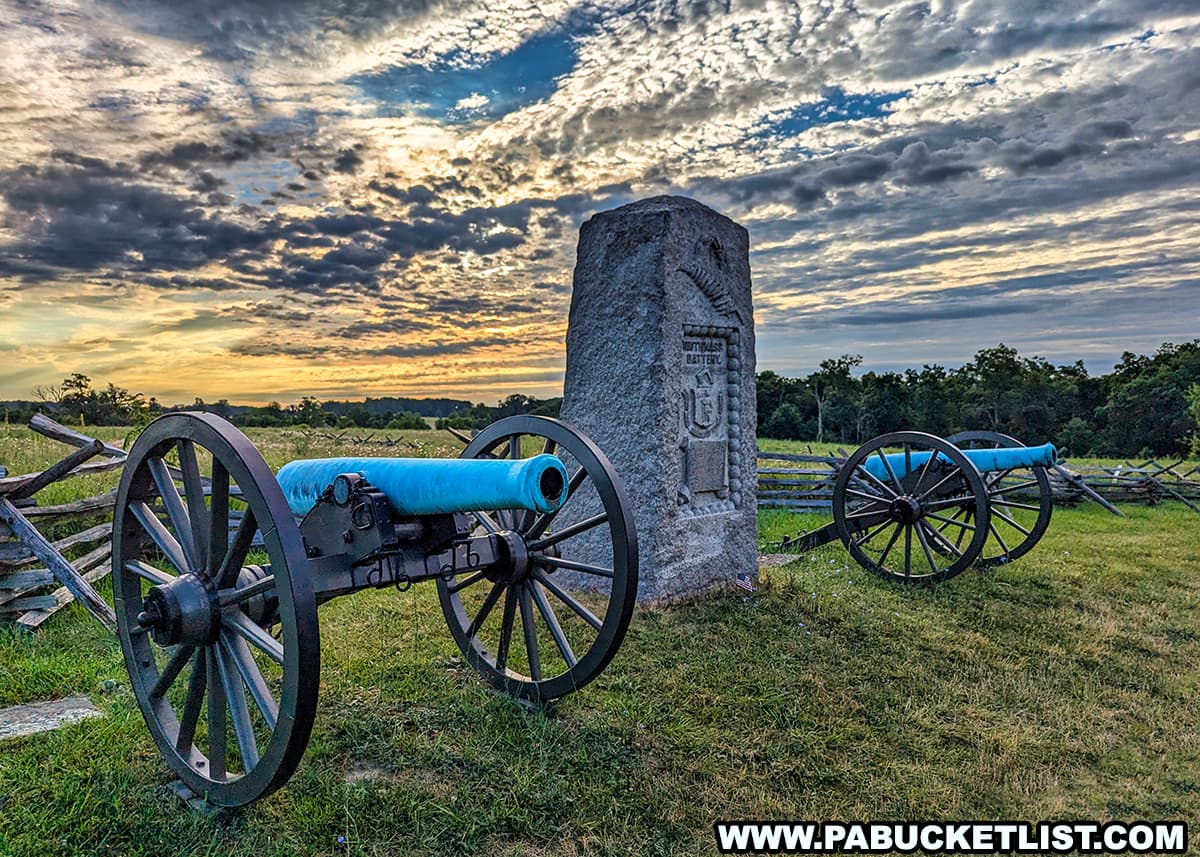
That these farms and fields ravaged by war are peaceful and pastoral once more is both a symbolic and ecological victory, well worth honoring and preserving.
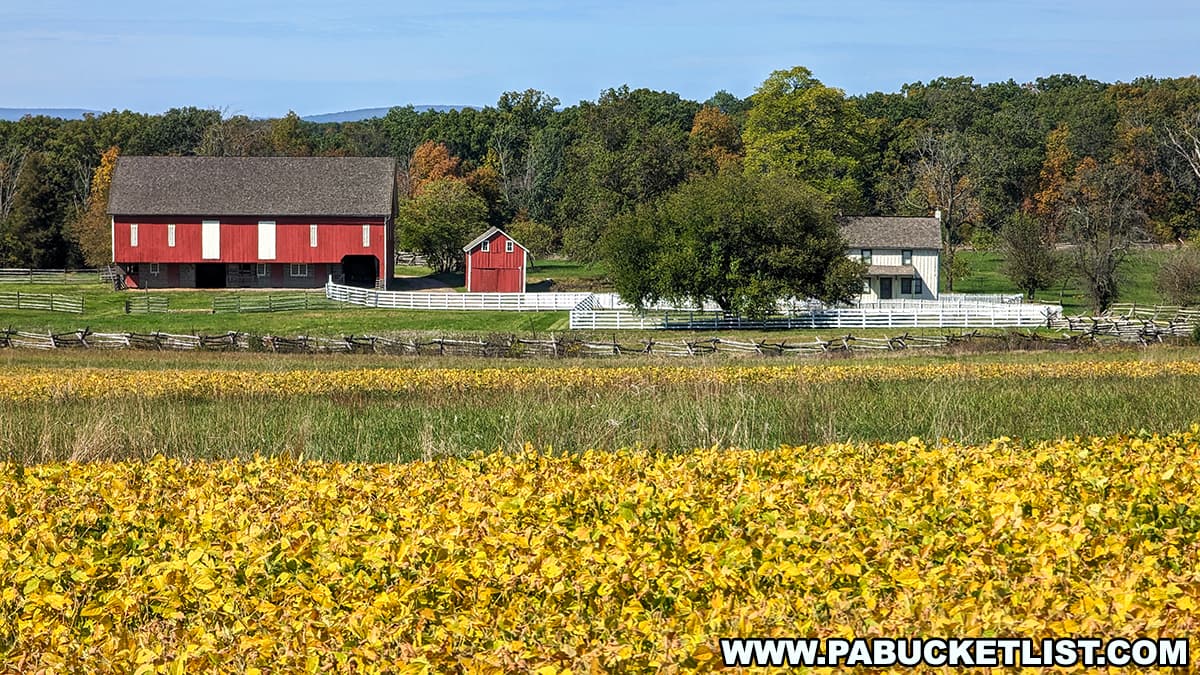
In short, few historic sites in Pennsylvania will have a larger “in-person” impact on you that the Gettysburg National Military Park.
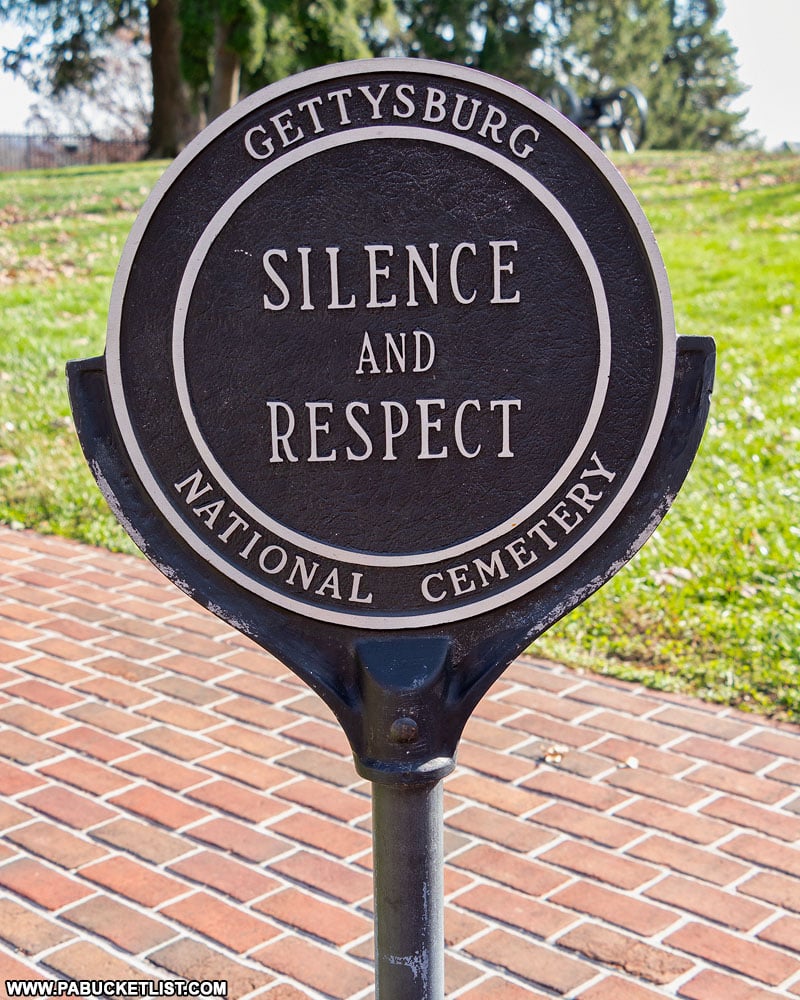
However you choose to tour it, you’ll likely come away from your visit to Gettysburg with a renewed sense of respect for those who fought and died on this hallowed ground in 1863.
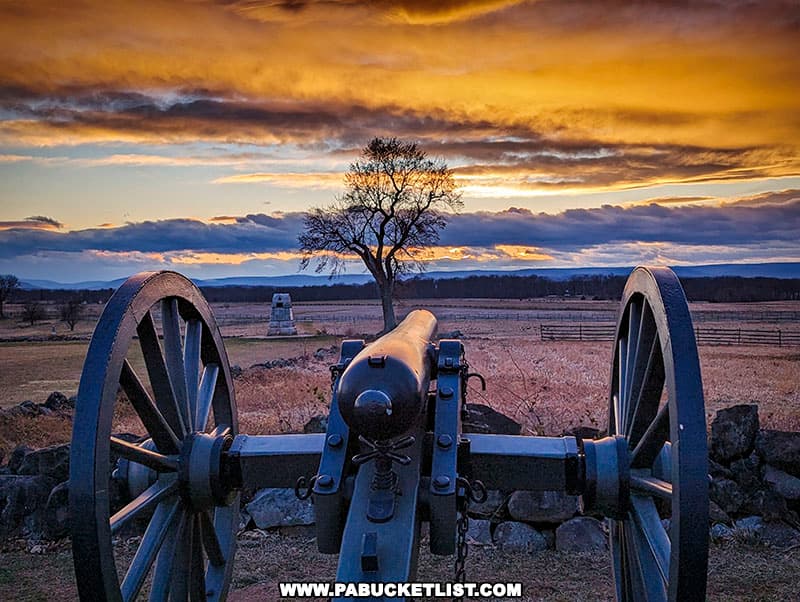
Related Articles
15 Must-See Attractions in Gettysburg is you guide to more of the best things to see and do in Gettysburg.
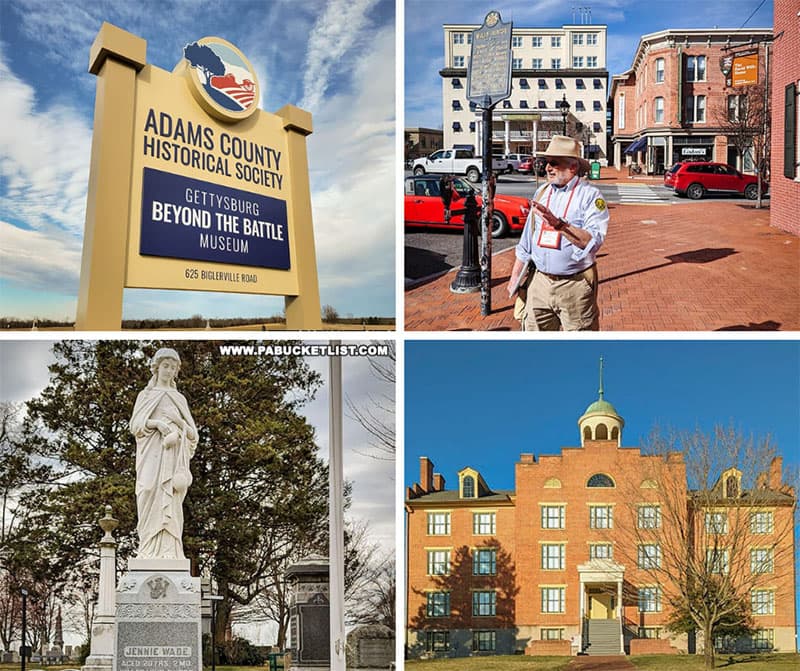
The Jennie Wade House is a historic landmark that memorializes the life and untimely death of Jennie Wade, the only civilian killed during the Battle of Gettysburg.
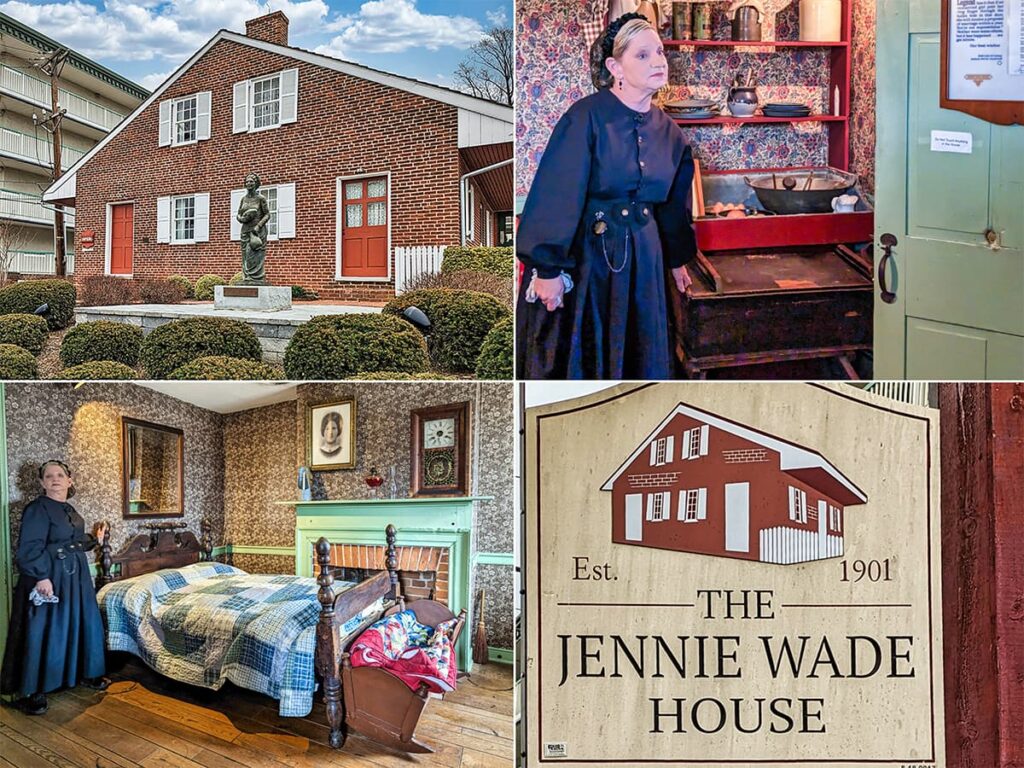
The Gettysburg Museum of History is home to thousands of unusual artifacts and atypical antiquities from American history, and admission is FREE!
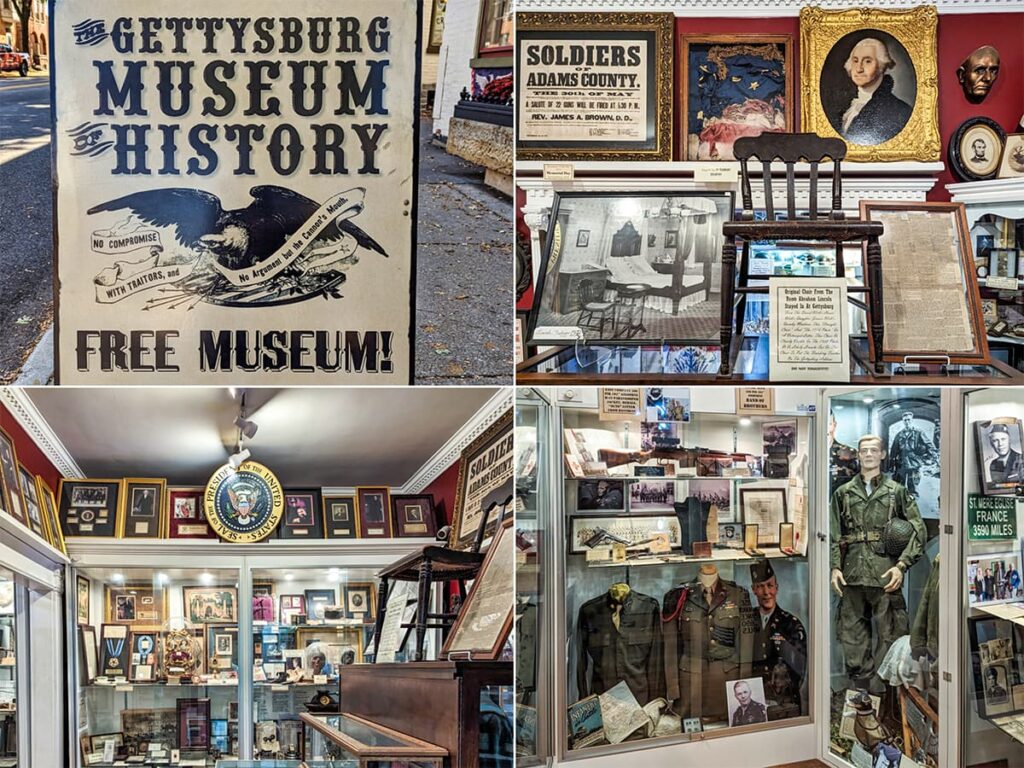
Sachs Covered Bridge was crossed by both Union AND Confederate troops during the Battle of Gettysburg, and was designated “Pennsylvania’s most historic covered bridge” in 1938 by the PA Department of Highways.
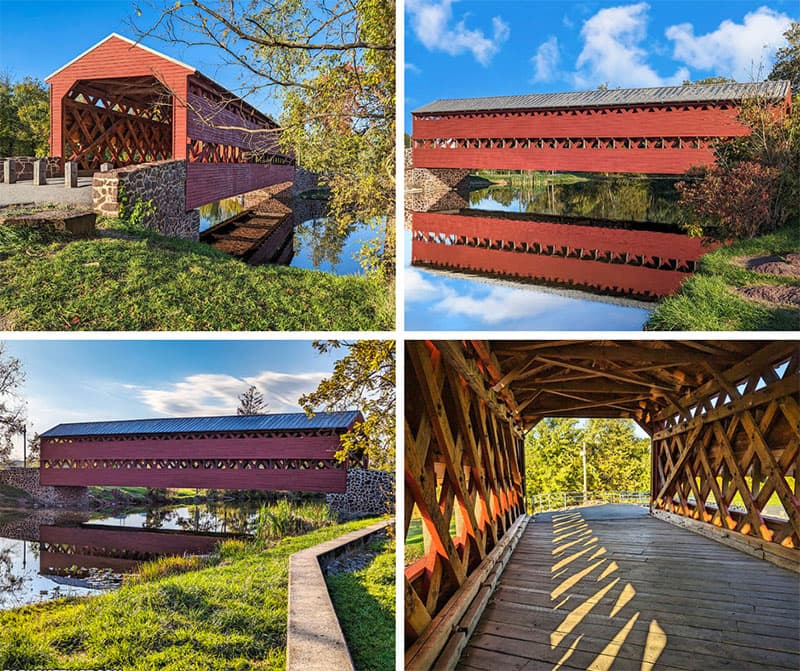
October 2023 marked the 30th anniversary of the release of the motion picture Gettysburg, and I was fortunate enough to be a guest at a star-studded event IN Gettysburg celebrating the occasion!
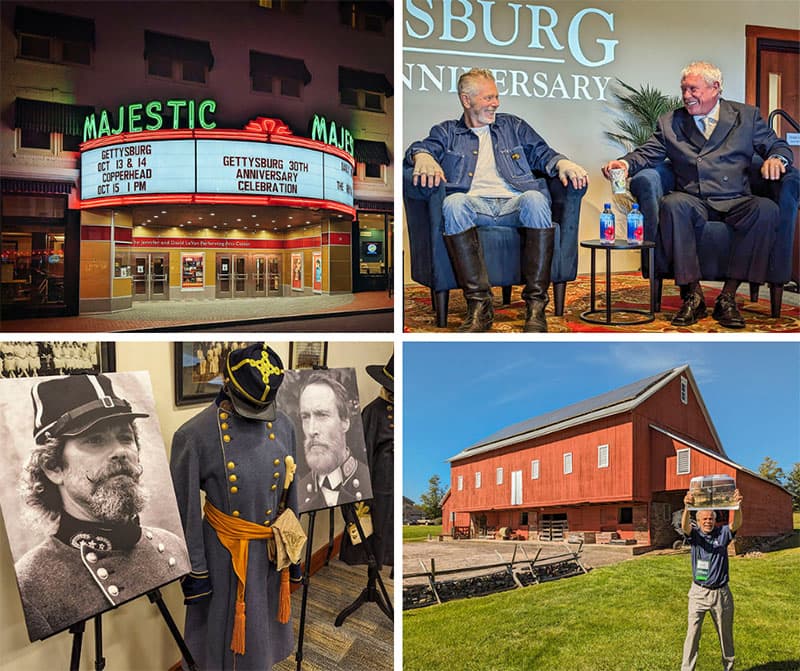
The historic Round Barn near Gettysburg is one of the most interesting and beautiful barns in Pennsylvania!
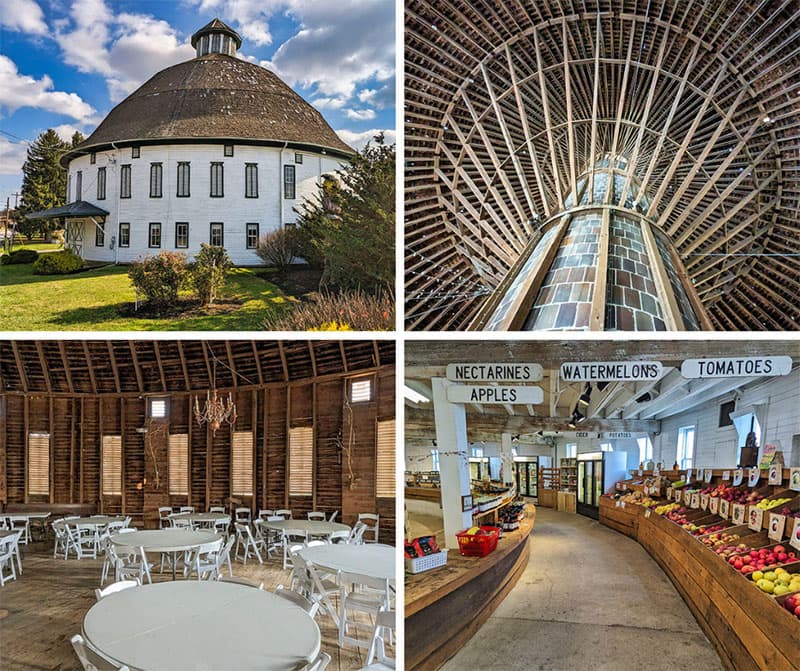
Mister Ed’s Elephant Museum and Candy Emporium near Gettysburg just may be the best elephant-themed roadside attraction in Pennsylvania!
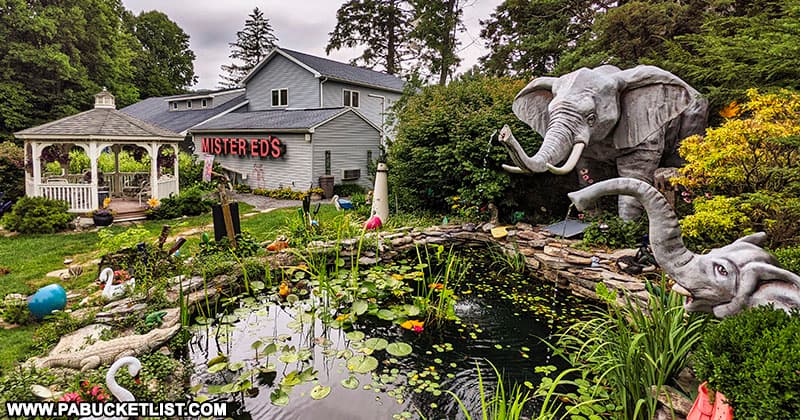
Exploring the Best National Park Sites in Pennsylvania is your guide to even more Keystone State attractions managed by or affiliated with the National Park Service.
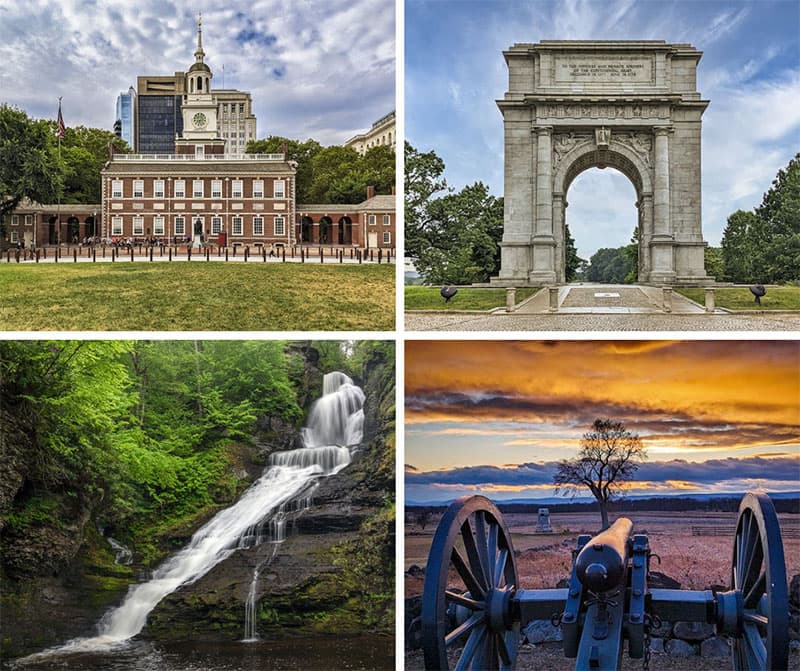
Did you enjoy this article?
If so, be sure to like and follow PA Bucket List on Facebook, Instagram, and/or Pinterest to learn more about the best things to see and do in Pennsylvania!
Click on any of the icons below to get connected to PA Bucket List on social media.


